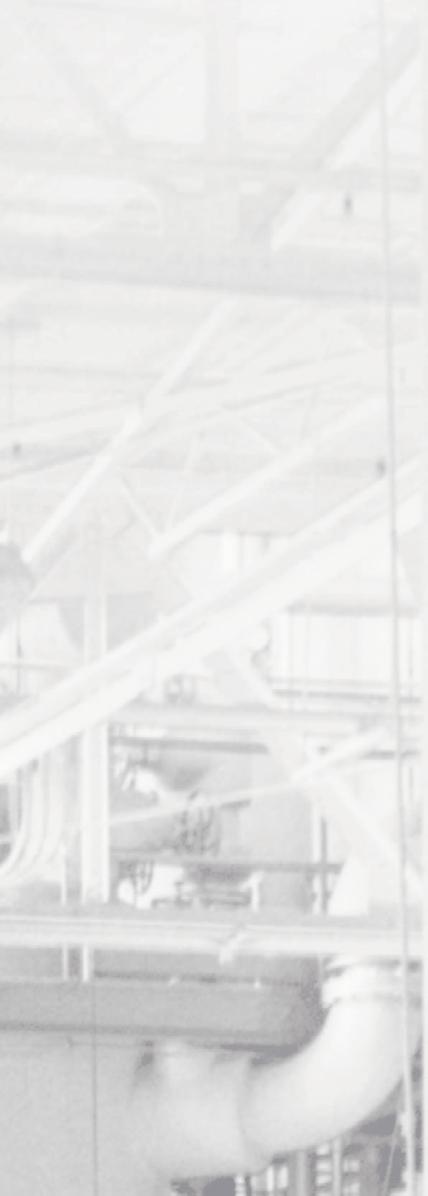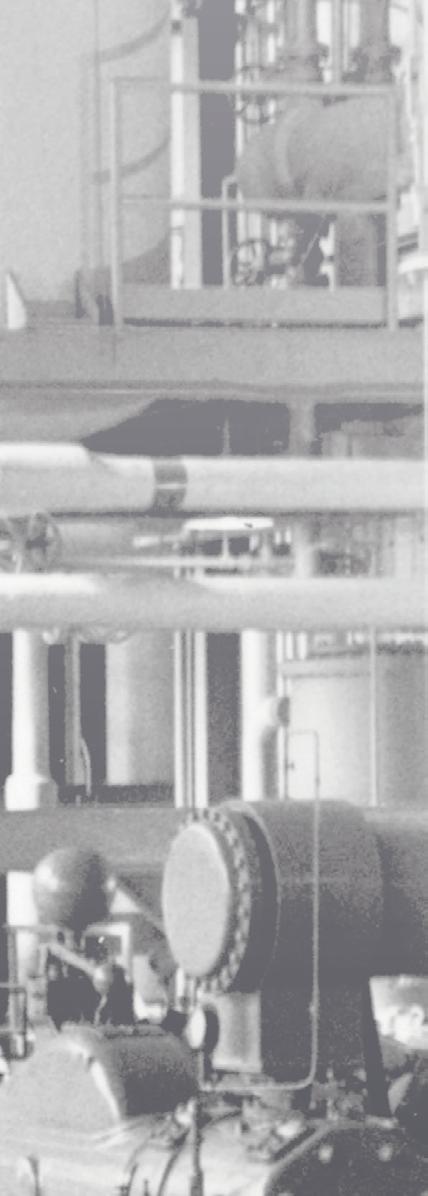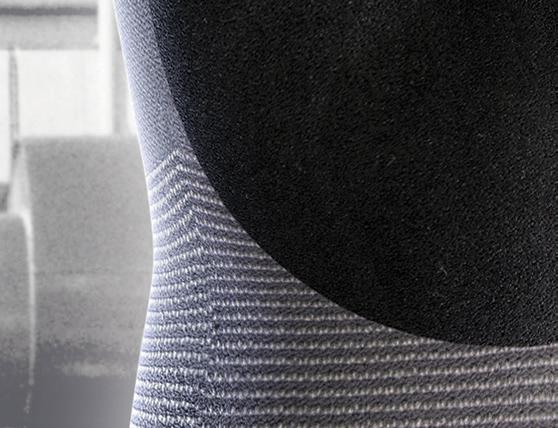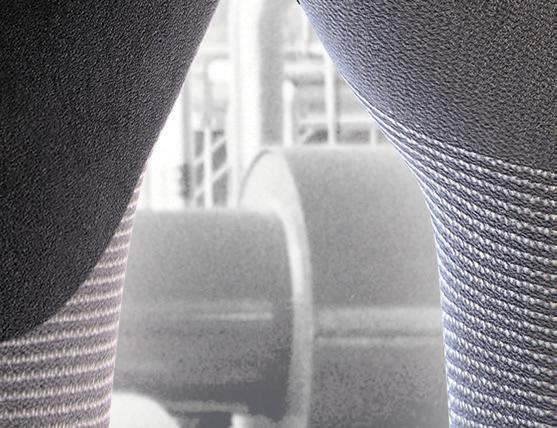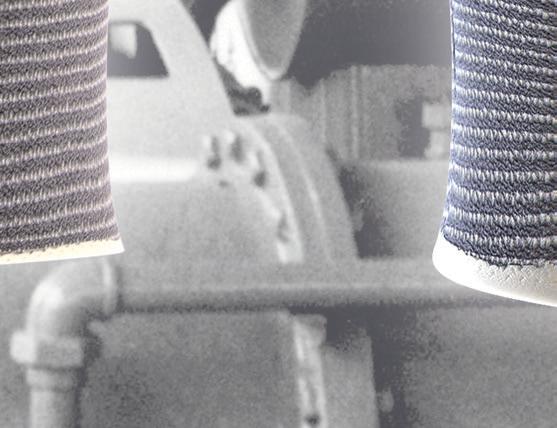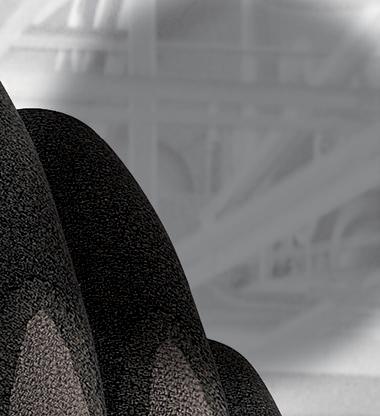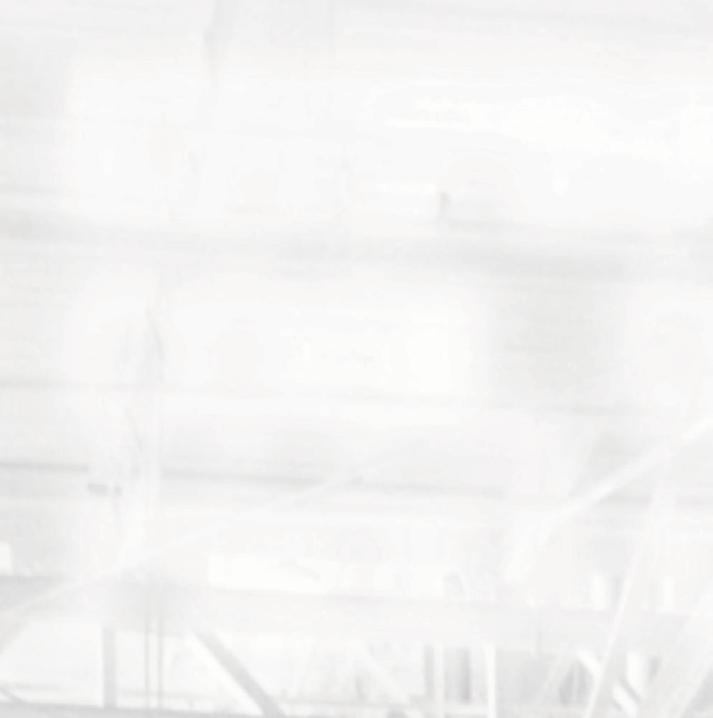FOE?









Increasing community concerns about vulnerability to unwanted chemical exposure and damage to our fragile environment places additional pressure on both suppliers and users of the chemicals.
We all need to sustain and improve our quality of life and these products must be safely managed throughout their life cycle.
places, by responding to workers’ suggestions about improvements.
Conscientious business operators can add value by sourcing accurate, cost-effective workplace chemical safety advice and compliance tools from their suppliers, industry partners and Responsible Care NZ.
However, they all obtain their chemical requirements from suppliers and can benefit from product stewardship advice and cost-effective industry compliance initiatives.
Today, chemical suppliers and their customers continue to adjust to the Covid operational environment.
They struggle with supply chain delays, the loss of experienced staff, frustration with unanswered queries to risk-averse authorities, inflexible and prescriptive regulations, rising compliance costs, diminishing resources and increasing public chemical safety expectations.
While 130,000 businesses are reportedly captured by the Hazardous Substances and Major Hazard Facilities regulations, the official mantra of “600-900 persons seriously harmed each year by unwanted exposure to chemicals in their workplace” presumably applies to all of the country’s 530,000 workplaces.
Downgrading the flawed but effective HSNO Certified Handler requirement has inadvertently undermined an invaluable capability.
The action deprived businesses, particularly SMEs, of an immediate and recognisable source of workplace chemical safety and compliance advice -- a safe chemical handling capability and emergency response knowledge – critical when a chemical incident occurs.
PCBUs and SMEs must now devise their own solutions to ensure employees are competent to safely handle the chemicals with which they work.
Chemical industry leaders are moving away from relying on lagging indicators of safety performance in favour of identifying safer work practices and work-
A proven strategy is government agencies collaborating with proactive industry associations to best achieve workplace safety aspirations. The problem is that SMEs rarely join associations.
Responsible Care NZ extols less regulation in favour of enabling business operators to be increasingly self-sufficient, using cost-effective products and services such as site compliance assessments and specialist training.
The focus is keeping people safe around the chemicals we encounter every day by adding value to businesses.
Chemical suppliers continue to help customers achieve workplace chemical safety aspirations through product stewardship initiatives.
To help solve the in-house chemical compliance dilemma in New Zealand, Responsible Care NZ delivers specialist and cost-effective Certified Handler standard training, complete with a certificate.
Responsible Care NZ site compliance assessments are non-threatening, effectively capturing and assessing chemical safety performance in a variety of workplaces. +64 4 499 4311

Findings from a recent WorkSafe report may shed light on why cancer and respiratory diseases contribute to 70% of all work-related deaths in New Zealand
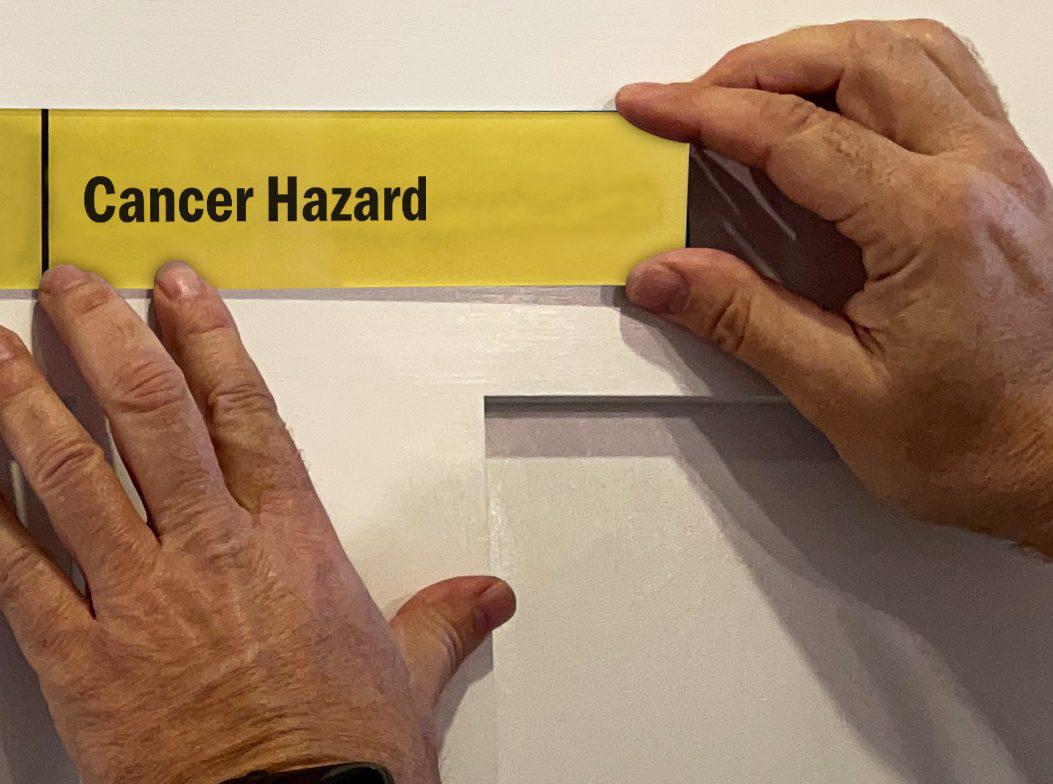
WorkSafe, in collaboration with the Occupational Integrated Database Exposure Assessment System (OccIDEAS) team and Research New Zealand, conducted the New Zealand Carcinogens Survey to estimate the current exposure to carcinogens among New Zealand workers.
Carcinogens are agents that, according to research, are known or likely to cause
cancer in humans.
The recently published survey report found that:
• Over half (57.5%) of workers are probably exposed to at least one carcinogen at any level
• 3% are probably exposed to five or more carcinogens at any level
• Over half (53.1%) of workers are exposed to at least one
carcinogenic agent at a low level
• Nearly three in ten (28%) workers are probably exposed to at least one carcinogen at a high level.
In New Zealand, carcinogens and airborne substances are probably associated with one-third of work-related harms. Cancer and respiratory diseases contribute to 70% of all work-related deaths.
Under the Health and Safety at Work Act 2015 (HSWA), businesses have a responsibility to protect workers from this exposure.
Findings from the survey will support the Government Health and Safety at Work Strategy 2018–2028 and WorkSafe’s carcinogens and airborne risks programme.
View the full report
The newly published Forklift Good Practice Guidelines (GPG) provides information and guidance to those involved in operations that involve forklifts.
This includes, but is not limited to, suppliers, trainers, employers, fleet managers, asset procurement managers, service providers, health and safety personnel and forklift operators.
The GPG provides safe work practices on how to select, maintain and operate forklifts. It also helps duty holders to meet their obligations under the Health and Safety at Work Act 2015.
It is sorely needed as the Approved Code of Practice of Forklift Training and Operations Practice (ACOP) was developed nearly 30 years ago, says NZ Forklift Industry Association Chief Executive Rodney Grant.
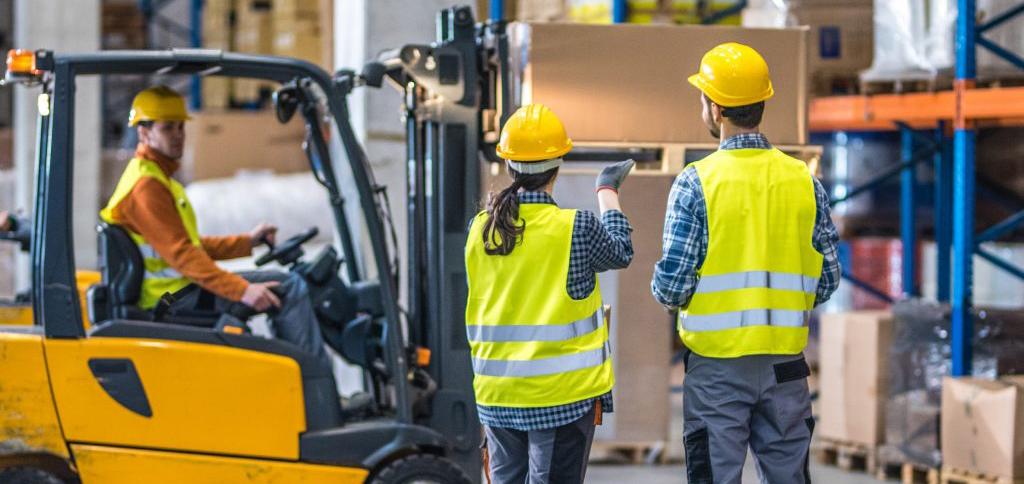
“The current regulations are no longer applicable to the settings in which the industry operates in and does not reflect current health and safety legislation.
“The existing regulations were published in 1995 and are totally unfit for purpose, given modern operating conditions, training techniques and equipment.
“That’s why we took the initiative to develop the new guidelines, which we are confident will help keep our industry safe and professional.”
For example, the current guidance often refers to the Department of Labour, Occupational Safety & Health Service, and the Health and Safety at Work Act 1992.
Both of these government organisations are defunct and the 1992 act was superseded in 2015.
The inherent design and principles of a forklift
haven’t changed some in decades but how we use them and how businesses operate has, Grant says.
“Not a lot has changed in the training of forklift operators and the safe operation of forklifts, however many sectors within the industry called for more information and support around forklift operations. The subject matter they sought guidance on was of a broader nature than what the ACOP currently provides.

“The Association did lobby regulators and government to provide further guidance, but resources, timings and the political landscape meant this was not going to happen at a speed that was suitable for industry.
“Therefore, the Association has taken on the task of creating an all-encompassing guideline document that better reflects current best practice.” Download
A new set of modern, fit-for-purpose forklift operating guidelines has been developed by the New Zealand Forklift Industry Association to replace the current outdated and inadequate industry guidance

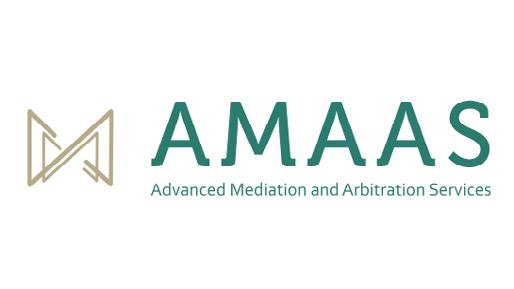

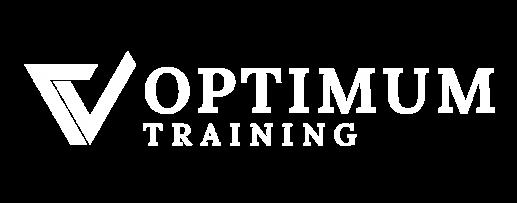



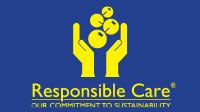








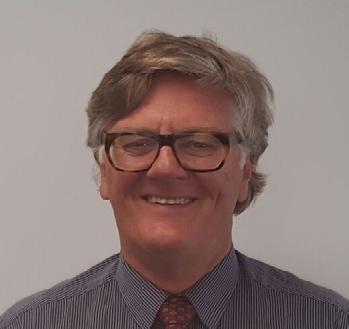

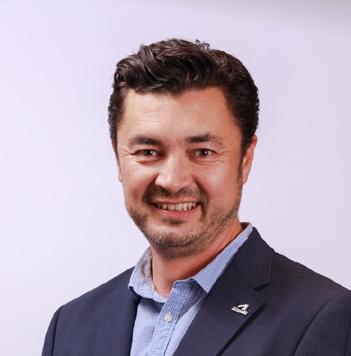

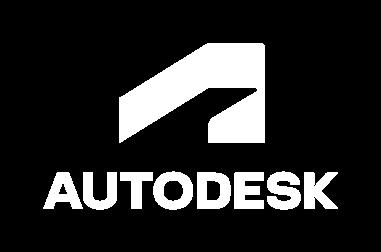
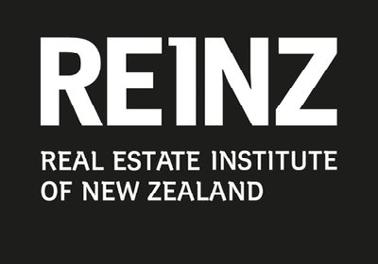
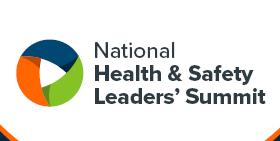






Worksafe NZ's Clean Air programme was their first targeted intervention on workrelated health. Their goal was to reduce the risk of respiratory ill-health caused by exposure to airborne contaminants in the workplace.
A key part of the programme is to raise awareness and eliminate or control the health risks of silica dust, organic solvents, welding fumes, wood dust, carbon monoxide and agrichemicals.
In New Zealand cancers and respiratory diseases from airborne substances account for at least 31% of total work-related harm and
an estimated 650 deaths per year. They account for 79% of the estimated 750 – 900 people who die annually from work-related health causes - Source: Worksafe NZ. More information here: https://www.worksafe.govt. nz/topic-and-industry/ work-relatedhealth/ carcinogens-and-airbornerisks/
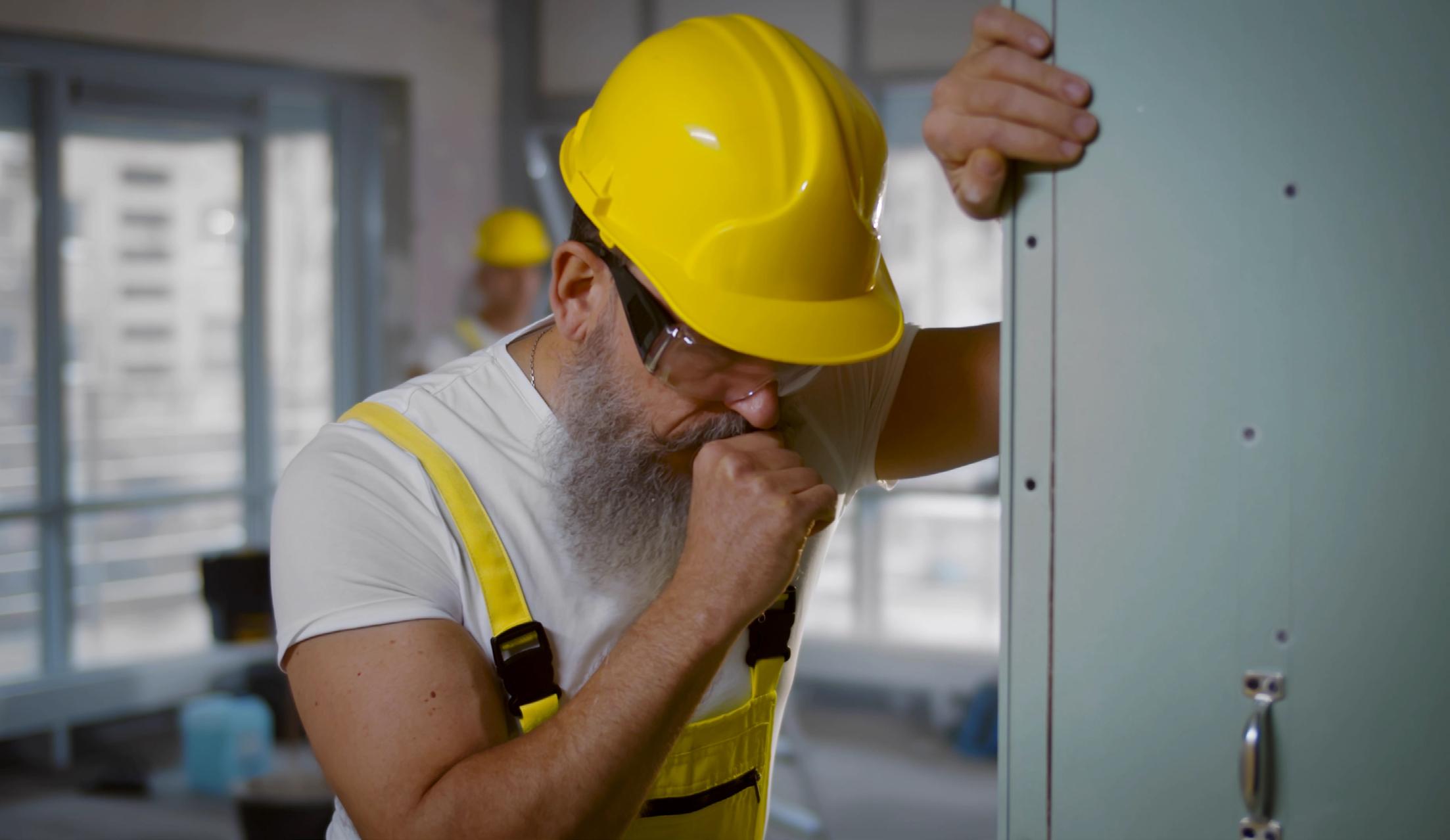
Whether you are an employer who needs respiratory solutions for employees or a welder, plumber, spray painter, asbestos worker, farmer or even a casual carpenter – LUNG PROTECTION IS VITAL!
It is incumbent on PCBU’s
to ensure that workers are not exposed to carcinogens and airborne risks. When the hierarchy of controls in risk management have been applied and risks remain, Respiratory Protection Equipment is one of the last lines of defence.
Choosing the correct type of respiratory equipment can be quite confusing, but here are a few simple guidelines to ensure that employers and workplaces make the right decision.
• Get advice from experts.
• Use a reputable supplier.
• Ensure the respiratory equipment complies with AS/NZS1716:2012.
• Use the right filters or opt for an airline system if
necessary.
• Change filters regularly.
• Only use the filters supplied by the manufacturer of the respiratory mask to stay compliant.
• Get “fit tested”.
pH7 has the expertise and products to assist companies with their respiratory requirements. Follow pH7’s respiratory “fast facts” articles on LinkedIn, Facebook and Instagram for more insights.
For end to end solutions, contact us on 0800 323 223, email us at enquiries@ ph7.co.nz or go to www.pH7.co.nz
It is incumbent on PCBU’s to ensure that workers are not exposed to carcinogens and airborne risks
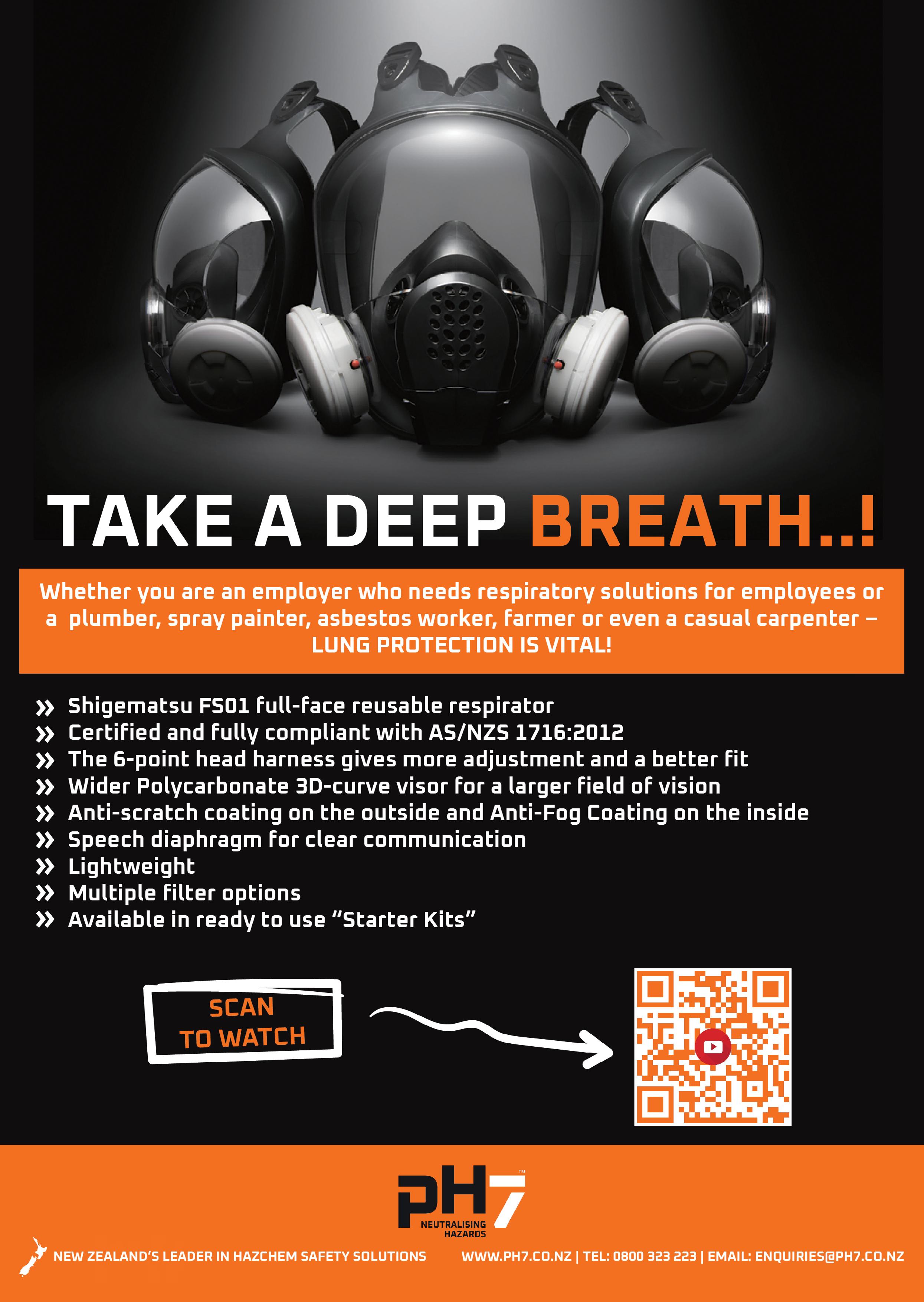
A contractor’s work environment must be safe for everyone involved, which means having the proper first aid supplies and personnel in an emergency
This article will discuss some essential tips and strategies for contractors to help them meet their first-aid obligations.

When it comes to health and safety on a job site, evaluating your first aid needs is the first step contractors should take. Taking the time to assess what kind of hazards may be present in any given work environment can help inform decisions about the type of first aid supplies and kits needed to keep workers safe and healthy.
The best way to do this is by checking the materials used, determining which jobs require special first aid training, and assessing the number of workers who may be working at any given time. For instance, contractors who work with dangerous chemicals or other hazardous materials need access to emergency medical treatments like oxygen tanks and chemical suits.
Choose the Right Supplies and Personnel
Selecting the right
supplies and personnel is essential when planning and meeting your first aid obligations. Choosing the right supplies will ensure that you have all the necessary items in an emergency while selecting the right personnel will ensure that they are adequately trained to handle a medical situation.
When selecting your first aid supplies, you should ensure that you have enough of each type to treat any potential injuries. First aid kits should include bandages, dressings, antiseptics, scissors, tweezers, adhesive tape, gloves, and eye protection.
You should also consider
purchasing specialized supplies such as splints and stretchers if needed by staff members or visitors to your premises. Additionally, many workplaces are now investing in automated external defibrillators (AEDs), which can help save lives during cardiac emergencies.
Training employees in first aid procedures is a critical step contractors should take to ensure they meet their obligations in providing adequate medical attention when necessary. While it may seem costly
or time-consuming, the benefits of equipping workers with the knowledge and skills to respond quickly in an emergency can help save lives and prevent severe injuries.
First aid training teaches people how to act in a medical emergency and ensures that advanced medical care is sought immediately. It equips employees with the skills to assess and respond to any type of injury or illness, including cardiac arrest, choking, strokes, heat exhaustion, snake bites, and more.
For example, if an employee falls off scaffolding or experiences any other serious injury, trained personnel onsite can help stabilize them until they get advanced medical care. Access to first aid materials such as bandages and splints can also be helpful if someone sustains minor injuries on the job site.
Contractors should not forget the importance of creating an emergency action plan (EAP) when planning and meeting their first aid obligations. An EAP helps to ensure the safety of employees, customers, and visitors by providing clear instructions on how to respond in the event of an accident or medical emergency.
A comprehensive EAP should include detailed instructions for responders; these instructions should address critical areas such as:
• who will take charge and provide overall supervision in the event of an emergency
• who will initiate phone calls for help
• how vital medical information will be communicated
• how evacuations will be managed
• what personal protective gear (PPE) must be worn
• what type of transportation may be used
Finally, all personnel must be aware of the EAP
recording each incident and injury can provide invaluable insight into how to prevent similar situations in the future.
In addition, having a comprehensive record of all reported incidents helps contractors keep track of their progress toward meeting their first aid obligations.
before working at a job site to adequately prepare themselves in advance. Furthermore, periodic drills should be conducted to ensure that everyone involved understands their role and responsibilities in case of an actual incident.
When meeting first aid obligations, there is no better way than to keep a detailed log of all incidents and injuries. This method helps contractors plan effectively and ensure they meet the standards set out by their health and safety regulations. In addition,
This means they can more easily identify areas where the action is needed, such as additional training for workers or special equipment purchases. Furthermore, logging incidents can help them demonstrate compliance with health and safety standards if external audits are conducted.
Moreover, logging injuries is essential in providing appropriate care to injured employees or visitors onsite. Keeping detailed records of what happened can help ensure proper treatment is given accurately and timely. It also allows for a followup to be carried out when necessary and for other preventative measures to be implemented before further similar incidents occur.
Having a sufficient supply of first aid products ensures that any injuries or illnesses that occur can be treated quickly and effectively. This helps minimize the risk of further problems arising from inadequate treatment, such as infection or delayed recovery time.
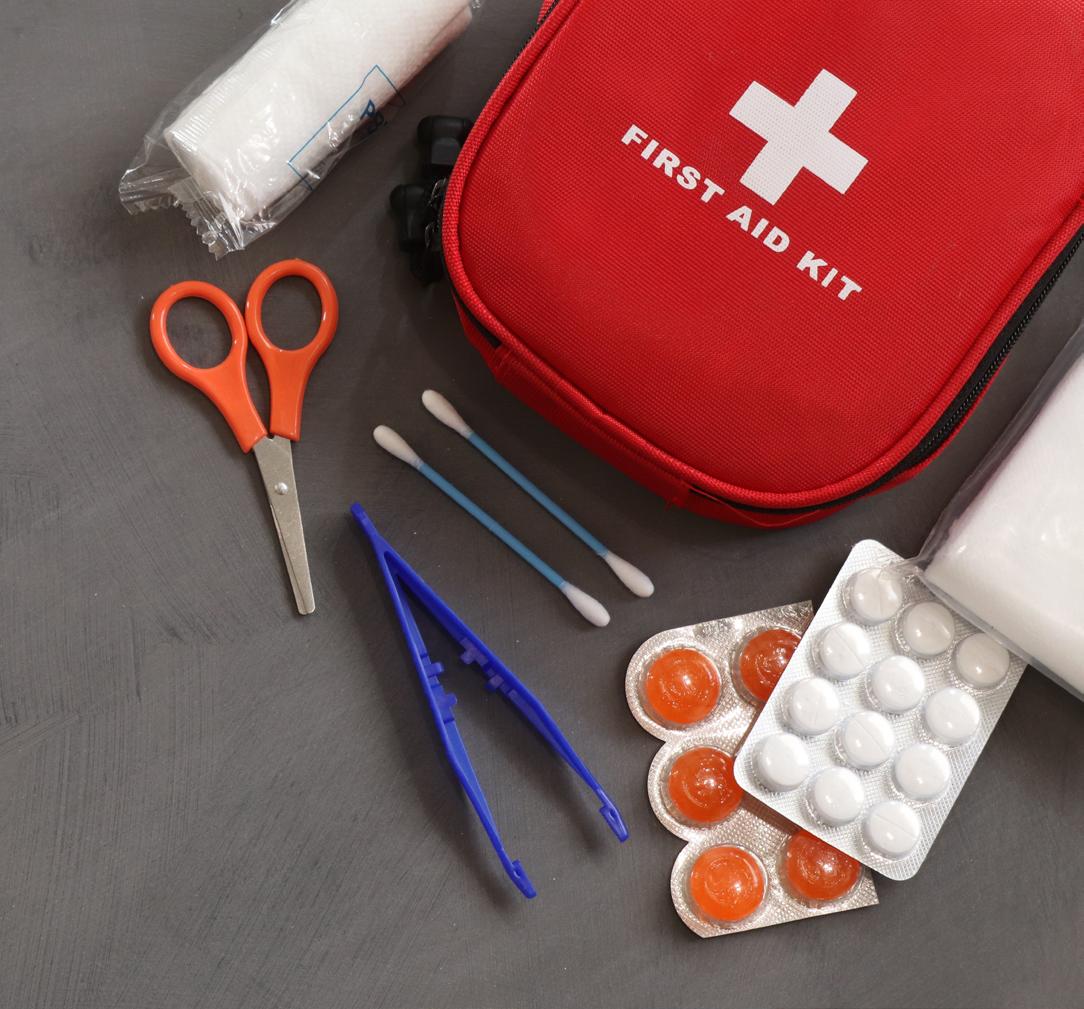
In addition, contractors should have a comprehensive list of all the items they need to keep in stock to prepare them for an emergency. In particular, they should always have a range of personal protective equipment (PPE) such as gloves, masks, and goggles available to protect workers from potential hazards.
It is also essential for contractors to regularly check these supplies and replace them when needed. Doing this helps prevent employees from being exposed to expired or damaged products, which could pose additional risks if used inappropriately or incorrectly.
Meeting first aid obligations is an essential part of any contractor’s job. Proper planning and preparation can ensure that all personnel are aware of their roles, ensure sufficient supplies are available to treat injuries or illnesses quickly, and keep a record of incidents and injuries for future reference.
Following these steps will help protect workers and visitors on site and demonstrate compliance with health and safety regulations.
medshop.com.au
Idle tools and equipment become that much more of a risk when stored underground
Two tunnel workers observed smoke emerging out of a heavy-duty steel toolbox that was stored underground on 8 July 2022 at 10.55pm. A third worker radioed in for assistance in extinguishing the fire.
A worker started to remove tools and other gear from the toolbox whilst the two other workers obtained a 9kg dry powder extinguisher.
The worker who was removing tools and gear from the toolbox observed sparks flying towards them. They stepped back and, after using the extinguisher, the fire was thought to have been put out.
However, the tool sparked a fire for the second time.
The workers closed the toolbox lid and a leading hand arrived at the scene with a second 9kg dry powder extinguisher. Workers opened the lid using scaffold tubes and the fire was extinguished a second time. Workers started removing tools out of the toolbox and placed them on a nearby scaffold.
Upon removing, workers found a 6V Hilti Lithium Battery 822 5.2 Li-Ion melted (connected) to a Hilti Sabre Saw SR6–A22. The leading hand used the extinguisher to spray down the battery and Sabre Saw. The fire had spread to other tools and batteries stored in the toolbox but the prompt actions of the workers prevented a larger fire.

What we know:
• Lithium battery fires have occurred in the past.
• Lithium battery fires can be difficult to extinguish.
• Poorly maintained battery-operated tools could contribute to these types of fires.
• Any combustible material stored underground is potential fuel for a fire.
PCBUs should:
• undertake a risk assessment of any underground operations to determine if battery-operated tools can be stored above ground
• avoid storing multiple
tools together
• ensure an inspection system is in place to monitor tool condition
• charge tools above ground
• consider steel toolboxes to contain potential fires
• ensure workers are trained to use fire extinguishers
• ensure the correct fire extinguishers are available
• alert workers to the potential for battery fires and the difficulty in extinguishing a battery fire
• consider removing the battery from the tool when not in use.
APCBU (person conducting a business or undertaking) must be proactive and keep a safe workplace. Know that there is a risk but do nothing about it and WorkSafe will vigorously investigate to prove the PCBU guilty, should there be an incident. Huge fines and even prison time can be imposed.
But a PCBU does not go to work fined. They need to know what to expect. In the case of lithium-ion batteries, a PCBU should know the dangers of them exploding, for if they do nothing and someone is hurt, the PCBU will be liable.
Last year, ABC reported a Western Australia resident’s garage catching fire, started by an old e-bike battery.

ABC says the batteries sparked more than 50 fires in Western Australia last year and as the sales of cordless vacuums, e-bikes and scooters, laptops and power tools rise, so does the number of house fires.
Peter Jones, Manager of the Fire Investigation and Analysis Unit at the Department of Fire and Emergency Services (DFES), explains to the ABC that it is extremely difficult to put these fires out with water.
“Some of the gases given off are really quite toxic and explosive as well.”
When a battery faults or overheats, it can shoot debris 5-10 metres away, he says.
“People don’t really
understand the risk until they’ve been exposed to it first-hand unfortunately. A battery can cause a fire that would affect your whole house.”
Consumer Protection WA Commissioner Gary Newcombe advises against leaving devices charging overnight, particularly in the house or the garage. Batteries should be charged outside, away from flammable items and not in direct sunlight as they can overheat.
However, DFES investigation officer Mark Hayes says lithium-ion batteries don’t need to be on charge in order to fail and can fail at any time without notice.
The New York Times reported that lithium battery fires have killed 13 people so far this year in New York, including four people in a blaze that started in an e-bike store.
There are many stories of damage caused by exploding lithium-ion batteries and often there are cases of insurance companies that will not insure the likes of golf clubs until they remove the lithium-ion charging golf carts.
But while they may not cover damages caused
by lithium-ion batteries in some cases, they may cover your Hazardous Mitigation Cabinet or Charging Cabinet if it saved a $10 million building from being destroyed, for instance.
The Safety Cabinet Warehouse have invented a range of Hazardous Mitigation Cabinets with cooling fans to reduce the heat produced from charging batteries down to around 15 degrees C.
The Charging Cabinet is designed to contain an explosion for when the batteries decide to explode. The cabinet has power sockets inside to plug in your battery charger to safely charge the Lithium-ion batteries, 1260-degree proof insulated walls and shelves which compartmentalise the batteries to mitigate the spread of exploding batteries to other batteries being charged in the same cabinet.
Batteries that explode in the middle of the night just keep emitting flames from around 500 degrees to over 1000 degrees. According to the fire department, a dwelling would normally be completely destroyed at around 600 – 800 degrees C. The smoke that comes
off exploding batteries is also very toxic.
There seems to be no discrimination for one brand of battery responsible for more explosions than another, nor whether the battery is from a drill, an RF scanner or a rechargeable torch.
If a battery being charged is submitted to overcharging or is simply faulty, it heats up. It is particularly vulnerable when overcharging, then high temperatures cause a thermal runaway event, then the battery violently explodes shooting flames in the air for up to an hour.
An exploding lithium battery is extremely difficult extinguish as it is fuelled by energy – it cannot be just smothered in water or CO2. In fact, a lithium-ion battery will keep going even under water until it is spent, but even then it can have a runaway event where it gathers up the unspent energy and starts up again with a second explosion which, could be an hour or more after the first explosion.
This is serious and something every PCBU should be prepared for.

WorkSafe New Zealand is warning businesses that anyone who tries to obstruct, cover up or manipulate evidence or situations will be met with serious consequences.
Aimex Limited was originally sentenced in July 2021 for an incident where an apprentice was exposed to vapour from solvents that he had been using to clean an engine room, causing serious injuries.
It was found to have failed to develop a safe system of work relating to hazardous
substances, and had failed to properly supervise, train and instruct its workers on work with hazardous substances.
During its investigation WorkSafe became aware of a similar incident at Aimex Limited, which was repeatedly denied by the business owners. Evidence later came to light that the business had destroyed key documents to cover up the previous incident.
WorkSafe passed this information to the Police, who prosecuted one individual for perverting
the course of justice and another for making a false statement.
“WorkSafe staff carry out high-quality investigations, so it’s surprising that some organisations try to obstruct, cover up, or manipulate evidence and situations to avoid being held to account. It doesn’t work,” says WorkSafe Chief Executive Phil Parkes.
“In this incident, WorkSafe was already actively involved when the documents were destroyed. It was a brazen decision and we applaud the Police
for prosecuting such a serious matter, as well as the people who came forward with information. We encourage anyone who sees unsafe work to raise a concern with WorkSafe.”
“Reducing exposure to harmful substances is one of WorkSafe’s enforcement priorities. Businesses know the risks harmful chemicals pose to workers and the public. Our message is simple: there is no excuse, and WorkSafe will do everything it can to hold you to account.”
A PCBU must, so far as is reasonably practicable, provide and maintain a work environment that is without health and safety risks. The work environment includes:

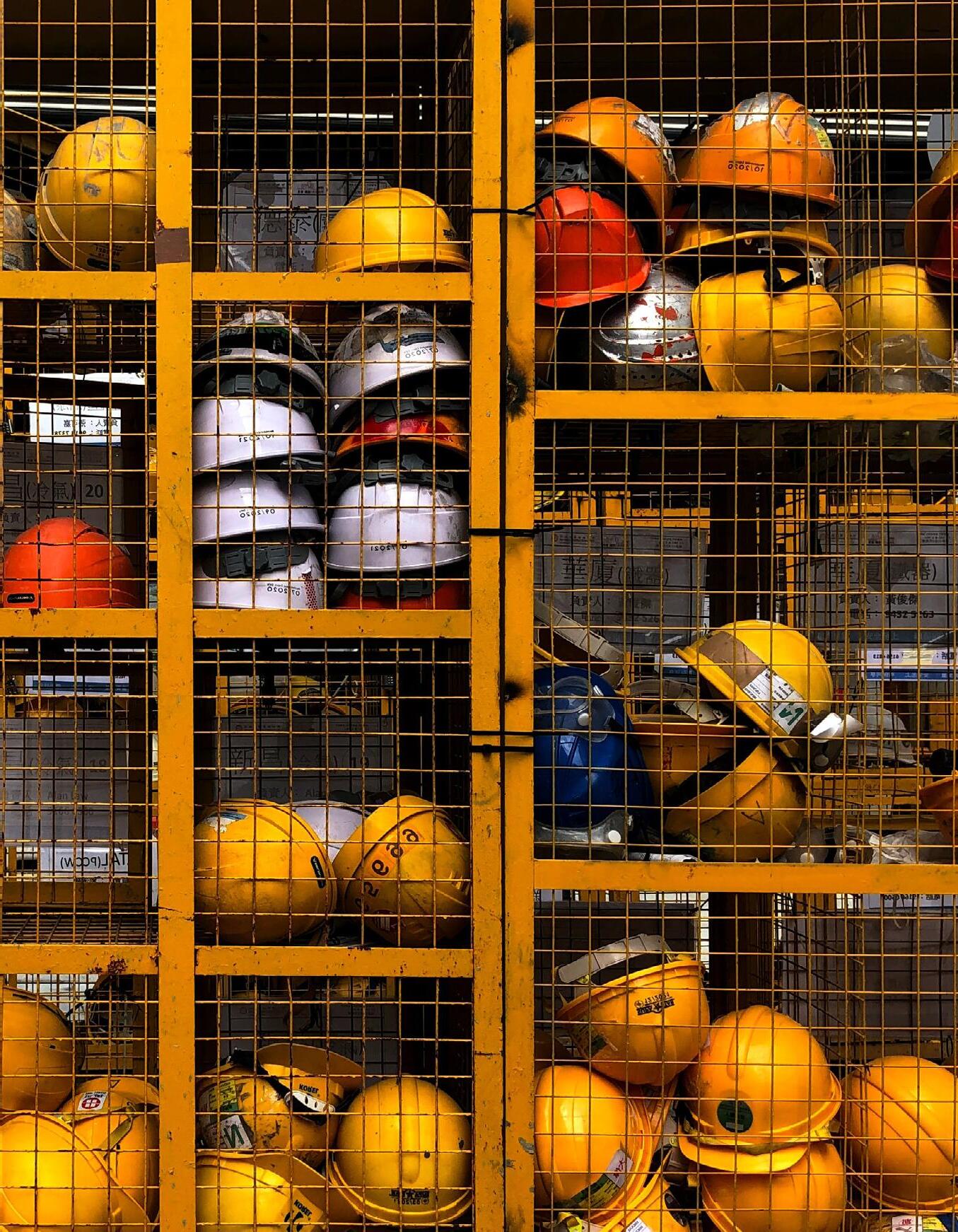
• the physical work environment, including lighting, ventilation, dust, heat and noise

• the psychological work environment, including overcrowding, deadlines, work arrangements (eg the effects of shift-work and overtime arrangements) and impairments that affect a person’s behaviour, such as work-related stress and fatigue, and drugs and alcohol.
PCBUs are responsible for providing and maintaining
safe plant and structures. This includes machinery, vehicles, vessels, aircraft, equipment (including personal protective equipment), appliances, containers, implements, tools, buildings, masts, towers, frameworks, pipelines, quarries, bridges, underground works (including shafts and tunnels) and any component of one of these items or anything fitted or connected to one of these items. PCBUs must also ensure the safe use, handling and storage of plant, structures and substances.
Providing safe systems of work is also a PCBU’s responsibility, as is providing any information, training, instruction or supervision that is necessary to protect

all persons from risks to their health and safety which may arise from the work of the business.

It is also a PCBU’s job to monitor the health of workers and the conditions of the workplace.
Another responsibility of a PCBU is to provide adequate facilities for the welfare of workers when doing work for the business, including ensuring access to those facilities. This also applies to providing healthy and safe worker accommodation when appropriate.
Click here for more information.
PCBUs that fail to meet their health and safety obligations are putting people at risk and can face prosecution. The following are recent examples of health and safety failures by PCBUs and the resulting consequences.
Fine: $36k | Reparation: $0k | Max Fine: $1.5m
A business which didn’t properly safeguard its machinery has been sentenced over two incidents, six months apart, in which workers had their hands disfigured
West Auckland bakery Bakeworks Limited, which makes gluten-free products, was sentenced in Waitakere District Court for health and safety failures related to both incidents.
In January 2021, a worker had four fingers severed when her hand got caught in a seed grinding machine. The worker had never previously used the grinder or received any training on its operation. The victim has since had seven surgeries on her hand and remains off work.
A WorkSafe New Zealand investigation found the grinder had no safe operating procedure, and its safety guard had not been replaced when it broke off 18 months prior. The worker was unsupervised, and the only training given to her was immediately prior to the incident.
In June 2021, another worker had her fingertip sliced off while using a dough dividing machine. The fingertip could not be reattached, and her treatment is ongoing.
WorkSafe found this machine again did not have any safe operating procedure, and its guillotine was freely accessible. There was no inspection or maintenance undertaken, and this victim was also inadequately trained – just like her colleague.
“Both of these incidents were entirely avoidable, but to harm a second worker is nothing short of reprehensible when Bakeworks was already on notice of the harm that deficient machine guarding can cause,” says
WorkSafe’s area investigation manager, Danielle Henry.
“These victims were vulnerable workers who deserved far better from their employer. It is fundamentally wrong that harm rates are worse for Māori, Pacific peoples and migrant workers, and New Zealand needs to do better.”
Read safety information about dough machinery

Read more about safe use of machinery
Fine: $280k | Reparation: $48k | Max Fine: $1.5m
A Hawke’s Bay meatworks faces costs of $328,000 after being sentenced for poor training and supervision
Poor training and supervision contributed to a worker having his hand seriously injured on unsafe machinery at a Hawke’s Bay meatworks, which has now been sentenced.
The incident occurred on the lamb brisket cutter at Progressive Meats Limit-
ed in Hastings in October 2020. The injured worker, Alesana Baker, was 17 at the time and was two weeks into the job – having just left high school.
Baker was trained to use the machine by a co-worker who started on the same day as him. The co-worker
demonstrated how to use the machine with one hand. When Baker followed this method, his right hand was struck by the brisket cutter blades. This partially amputated his thumb, index finger, middle finger and ring finger.
Following a trial in Decem-
ber 2022, Judge Geoff Rea found Progressive Meats guilty of health and safety failures. His decision noted the “training was completely inadequate and… positively dangerous”.
Supervisors, senior management, and the company
owners were unaware of the brisket cutter being used single-handedly and, until this incident, did not believe it could be used in such a way.
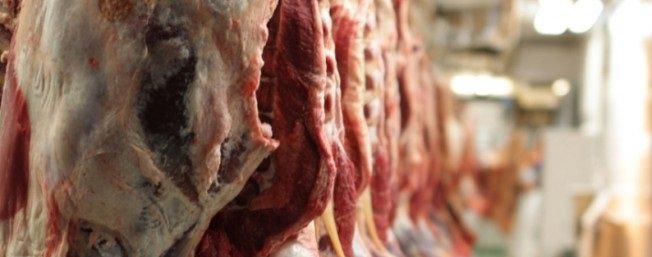
“Alesana was at the very start of his working life when this awful injury was inflicted. It’s unfair for him to have been robbed of the full function of his hand,” says
WorkSafe’s area investigation manager, Paul Budd.
“I echo the Judge’s view that proper training must always be given and the safety aspects explained
Fine: $250k |
Reparation: $100k |
when workers deal with potentially dangerous equipment such as this.”
Read more about the safe use of machinery
Max Fine: $1.5m
Despite the slide being operated by another party, a council has been sentenced for its part in failing to keep people safe when it collapsed

Thames Coromandel District Council authorised JTK Trustee Limited to operate the giant inflatable slide at the Whangamatā Summer Festival in December 2020. A dozen people, most of whom were children, fell
from heights of up to 12 metres. A father on the slide, Louwan Van Rooyen, broke both his ankles and has required 11 surgeries since.
In August 2022, JTK Trustee Limited was fined $350,000 and ordered to
pay reparations of over $40,000 over the incident. Now, the council has now been ordered to pay reparation to Mr van Rooyen, for its failure to manage a shared risk.
“Over and above the
operator’s obvious failures, the council plainly failed to do its due diligence on an operator with a poor safety record,” says WorkSafe’s area investigation manager, Paul West.
WorkSafe found JTK
applied to the council using an old form which didn’t require confirmation the slide met safety standards. A permit was given three days after JTK applied, without the council doing any of the checks recommended by its own staff.
After the incident expert reports found the slide was electrically unsafe, had air
leaks via holes and seams, and poor anchoring.
“Businesses and organisations that consent and permit events and equipment cannot absolve themselves of responsibility for health and safety when things go wrong. Whānau should have the confidence that public events they attend are being run in a safe man-
ner,” says Paul West. Slide users can keep safe by looking for the AS 3533 label, which should be prominently displayed on inflatable slides from reputable manufacturers, and can ask the supplier or operator about their practices and how it can be used safely.
Read more about the requirements for land-borne inflatable devices
Read the 2022 sentencing of JTK Trustee Ltd
Read more about overlapping duties
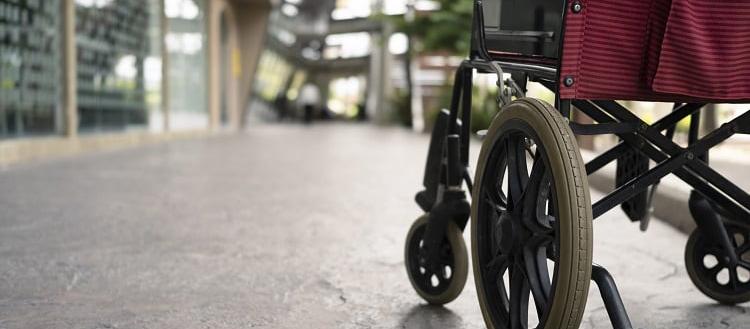
Fine: $258,918.92 |
Reparations: $61,464.20 | Max Fine: $1.5m
Fine: $175,000 |
Reparations: $46,386.20 | Max Fine: $1.5m
Two construction companies have been held accountable for a cavalier attitude toward keeping people safe when working at height
The lack of planning and implementation of safety measures from both companies left a builder with life-changing injuries after they fell three metres from an unguarded second floor void on a construction site in September 2020, including a broken spine causing paralysis. The victim can no longer work as a builder as a result of their injuries and now requires a wheelchair to move.
The employer, Chunda Limited, and the property developer, JMK Homes Limited, were sentenced
at the North Shore District Court in March with a final decision on fine amounts and reparations delivered on 28 April.
“The injuries the victim suffered were entirely preventable if controls, including edge protection had been in place to address the risks of a fall from height. They are inexpensive, easy to obtain, and easy to set up,” says WorkSafe’s area investigation manager, Danielle Henry.
“This was demonstrated in the immediate aftermath of the incident when edge
protection was installed by workers using construction materials available on site. It was confirmed to WorkSafe this only happened after the incident. This is an indictment on the business and further underlines how avoidable this injury was.”
Chunda Limited had a worrying history around protecting its workers, and WorkSafe had taken a number of enforcement actions against the company since 2017 to influence the company to do better. This included seven prohibition notices, two sustained com-
pliance letters, one directive letter, and two improvement notices.
“WorkSafe had a number of interactions with Chunda Limited, and they were on notice to up their game and keep workers safe. This included providing them with guidance and information related to risk management. This is why this incident is, in our eyes, unforgiveable and inexcusable given the track record,” says Danielle Henry.
Read WorkSafe’s guidance on working at height



success of Rapid Facility Services is driven by a team that combines experience, commitment and a professional skillset that covers every aspect of facilities management with personal service
The team was forged by three friends working in the industry who realised that the key thing stressed building managers, business owners and landlords needed was to make a single call and get a reliable and qualified support team that would cover any aspect of facilities management.
The Rapid trio set down a business philosophy that “we will do what others can’t or won’t do “ and set about assembling a highly trained, efficient and safety-conscious team of professionals who get the job done right, the first time.
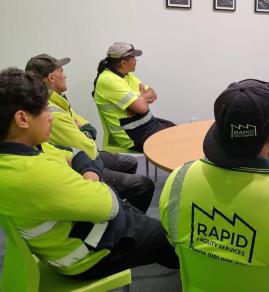
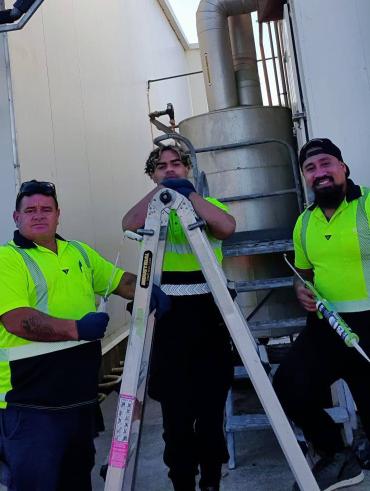

Today that service stretches from food manufacturers’ audit cleaning, all aspects of industrial cleaning, painting, building and floor safety management to anti-microbial and moss
ceilings, walls, floors
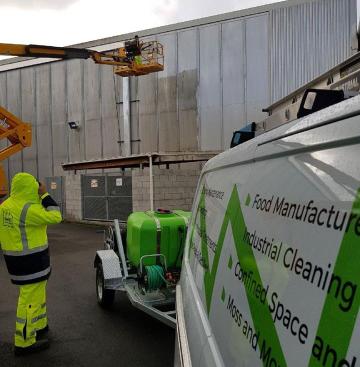


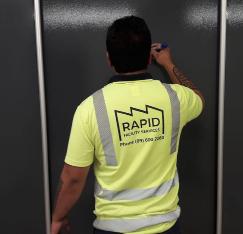
Workers can be exposed to risks that may lead to musculoskeletal disorders (WRMSDs), but what are they and what factors increase their likelihood?

WRMSDs are injuries or conditions that occur because of or are aggravated by work demands. Many risk factors contribute to work-related discomfort, pain, and injury. PCBUs must manage WRMSD-related risk factors to protect worker health.
WorkSafe uses the term work-related musculoskeletal disorders (WRMSDs) to refer to injuries or conditions of the musculoskeletal system that occur when work demands lead or contribute to the discomfort,
pain, or injury. WRMSDs are injuries and conditions affecting:
• muscles
• ligaments
• bones
• tendons
• blood vessels
• nerves.
WRMSDs may start as mild aches and pains and can develop into serious conditions.
Examples of WRMSDs include:
• strains or sprains
• joint and bone injuries or degeneration
• nerve injuries
• muscular and vascular disorders resulting from vibration
• soft tissue injuries such as hernias
• chronic pain.
In Aotearoa New Zealand, WRMSDs have also been known as:
• repetitive strain injury (RSI)
• occupational overuse syndrome (OOS)
• gradual process injury
• discomfort, pain, and injury
• body stressing.
WRMSDs may happen because of a single incident or event (for example, tripping over and spraining an ankle), or develop over time when workers are exposed to one or more risk factors.
WRMSDs may affect work
performance by:
• lowering a worker’s ability to perform their job and to work safely
• reducing work productivity and quality as workers work around their pain and discomfort
• contributing to other illnesses and impacting a person’s mental health.
For more information on our definition of WRMSDs, see Definitions: Musculoskeletal disorders and work-related musculoskeletal disorders
For information on how the definition was developed, see Work-related
musculoskeletal disorders – definitions review
There are many work-related risk factors that can contribute to injury. These factors can work alone or together. Both manual and sedentary work have risk factors that may lead to WRMSDs.
Work-related risk factors can be divided into five categories:
• biomechanical and physical factors (physical nature of work tasks)
• work organisation factors (how work is organised)
• environmental factors (work surroundings)
• individual factors (unique things that are specific to a person)
• psychosocial factors (how a person feels and how they connect with people).
Non-work factors may also contribute to risks (for example, sporting activity,
hobbies or other after work activities may add to muscle fatigue).
Biomechanical and physical factors:
• Forces/loads
• Task duration/repetition
• Workplace layout and design
• Hand/arm and whole body vibration
• Awkward postures
Work organisation factors:
• Workplace and plant design
• Task and equipment design
• Rostering and shifts
• Training and education
Environmental factors:
• Temperature
• Humidity
• Lighting
• Noise Individual factors:
• Age
• Body size
• Previous injuries/fitness
• Fatigue/mental state
Psychosocial factors:

• Job demands
• Workload
• Control and support
• Job satisfaction
How each of these factors affect a person depends on their unique characteristics and situation.
A worker is likely to be exposed to several (and in many cases, all) of the work-related risk factors at the same time. The more factors the worker is exposed to, the higher is the likelihood of harm.
To understand how these factors can interact with each other, consider the following scenario below.
Donna has worked for the last 20 years on a production line in a factory. She is 55-years-old and had a previous injury to her shoulder which sometimes can become sore. These are examples of individual factors that may affect Donna at work.
Donna’s job is to reach out and pick small boxes of baking powder off the
conveyor and put them into larger boxes. The small boxes are light, but she repeats the same movements with her shoulders, arms, and hands throughout the day. She also stands to complete her tasks. These are examples of biomechanical and physical factors that may affect Donna at work.
Donna works set shifts of 8 hours a day, 5 days a week. There is no job rotation between tasks, and the conveyor heights are fixed. These are examples of work organisation factors that may affect Donna at work.
It is a large noisy factory, and it can be difficult to communicate with workmates. It also gets very hot in summer and cold in winter. These environmental factors may affect Donna at work.
Sometimes Donna feels stressed because she has no control over the conveyor speed, and she often struggles to keep up with the pace. She knows her manager will be annoyed if productivity is affected. These are examples of psy-
chosocial factors that may affect Donna at work.
Outside of work, Donna is a keen mountain-biker. This is an example of a nonwork factor that may add to Donna’s risk of muscle fatigue at work.
This scenario shows that Donna is exposed to many risk factors. The nature of these factors and how they interact may vary from dayto-day.
How these factors interact and combine may affect Donna’s risk of harm.
Under the Health and Safety at Work Act 2015 (HSWA), a person conducting a business or undertaking (PCBU) must, so far as reasonably practicable, keep workers and others exposed to their work healthy and safe.
This means PCBUs must, so far as reasonably practicable, manage health and safety risks, including risks associated with WRMSDs. Since there are many factors that could increase the risk of WRMSDs, there are many control measures PCBUs can put in place to
eliminate or minimise the risk of harm.
More than one PCBU can have a duty in relation to the same matter (overlapping duties). PCBUs with overlapping duties must, so far as is reasonably practicable, consult, cooperate and coordinate activities with other PCBUs so that they can all meet their joint responsibilities. For more information, see Overlapping duties – quick guide
1. Identify the hazards and risk: The first step is to identify the hazards and risks workers are exposed to. Understanding risk factors that could lead to WRMSDs and identifying them in the workplace will help PCBUs choose suitable control measures. PCBUs must, so far as reasonably practicable, engage with their workers and worker representatives and should include workers in the risk assessment processes.
1. Implement control measures: Once a PCBU identifies a work-related risk, they must so far as be
reasonably practicable, eliminate those risks. If a risk can’t be eliminated, it must be minimised. PCBUs must, minimise risks by implementing effective control measures. PCBUs can use the hierarchy of controls to help them work out the most effective control measures (see Figure 1). PCBUs should select controls higher up the hierarchy of controls rather than relying on administrative controls like policies, procedures, or guidance.
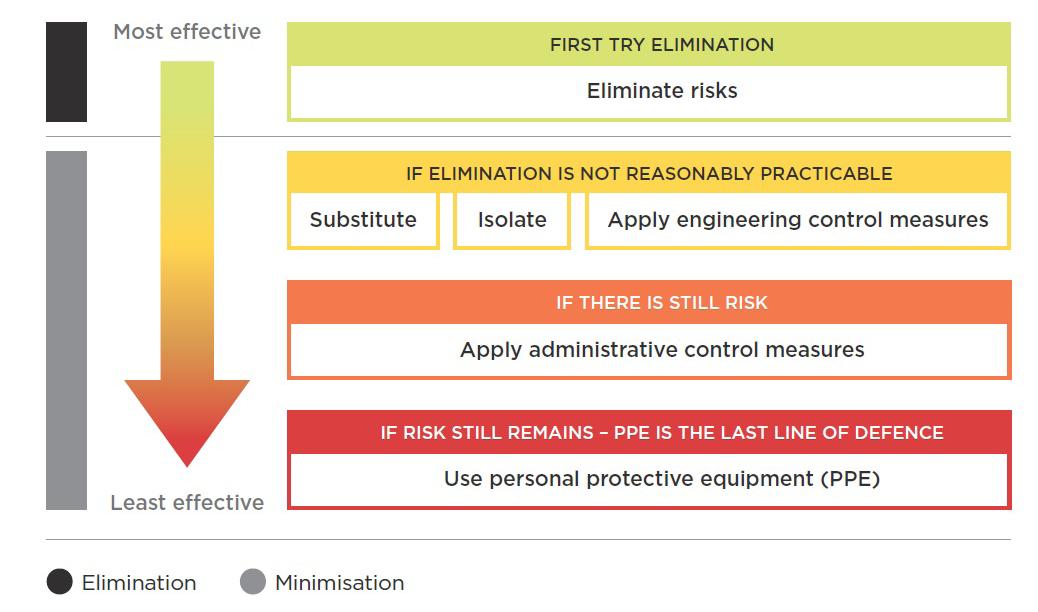
PCBUs should follow good workplace design principles to control WRMSDs.
Examples of controls for WRMSDs associated with hazardous manual tasks:
1. Elimination – automate a process or task so that people don’t have to handle loads (for example, a machine that automatically transfers boxes from conveyor to pallet)
1. Substitution – reduce load weights by replacing large heavy containers with small-
er ones that are easier to handle
1. Engineering – have easily adjustable workstations to suit workers of different heights and allow different work methods/ product types
1. Administrative –make sure workers have received training on how to do their job and any equipment they need to use.
Control measures should:
• remain effective
• be fit-for-purpose
• be suitable for the nature and duration of the work, and
• be implemented by workers correctly.
PCBUs must monitor:
• the performance of control measures to make sure that control measures are effective, and no new risks have been introduced
• workplace conditions and worker health, so far as is reasonably practicable.
If there are new risks, PCBUs must review their control measures in place and may need to introduce new controls to make sure that the risks are managed.
Make sure you engage the workers when you make decisions about procedures for monitoring.
To learn more about how to manage work risks, see WorkSafe’s guidance Identifying, assessing and managing work risk [PDF, 404 KB]
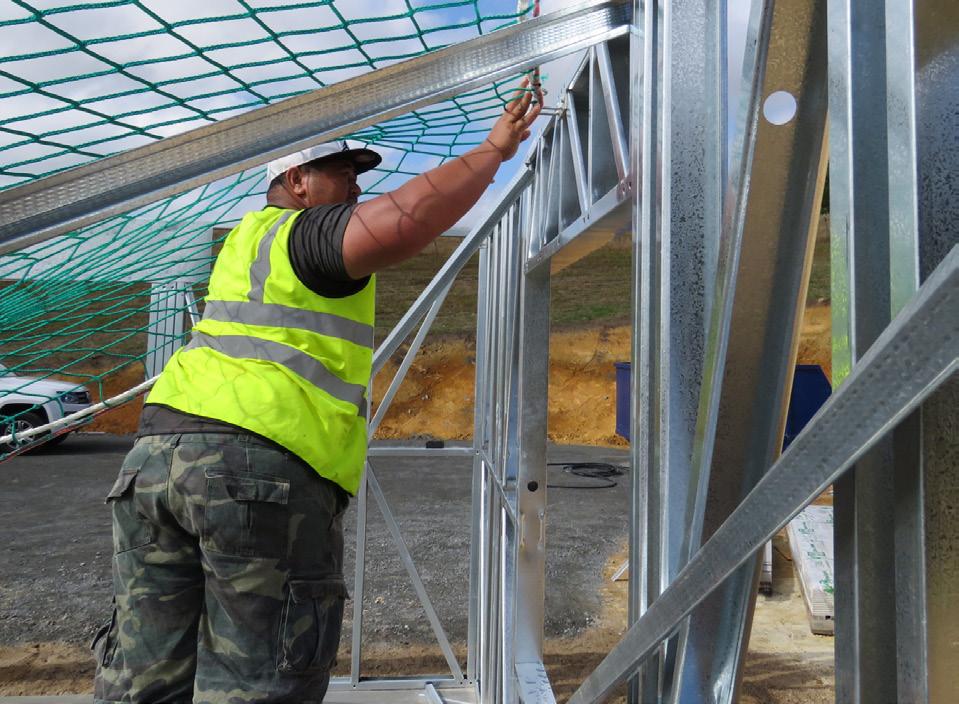
With the enactment of the Health and Safety at Work Act (2015) it became apparent that there was a need to assure customers that they comply the requirements of the Act in safety measures for fall arrest.
“We needed to have our system independently analysed, engineered and ultimately certified. This meant that not only did the individual components of the safety net fall arrest sys-
tem have to be tested, the performance of the safety fall arrest system as a whole also needed to be studied,” says General Manager Craig Daly.
A team at the School of Engineering and Technology at Massey University tested a variety of drop heights and weights, different bracket centres, various net sizes and points where the load strikes the net.

“It even tested nets of different ages and repaired
nets, with the results being collated and analysed to effectively confirm that our safety fall arrest system works,” says Daly.

“This enables PCBU’s to discharge their responsibilities in regard to the requirements of the in the use of a system that is without risk to the health and safety of it’s workforce.”
When the nets have been installed and inspected by a Safety Nets NZ team and a handover certificate
completed by our certified rigger, the client can then commence works above the safe area of the net.
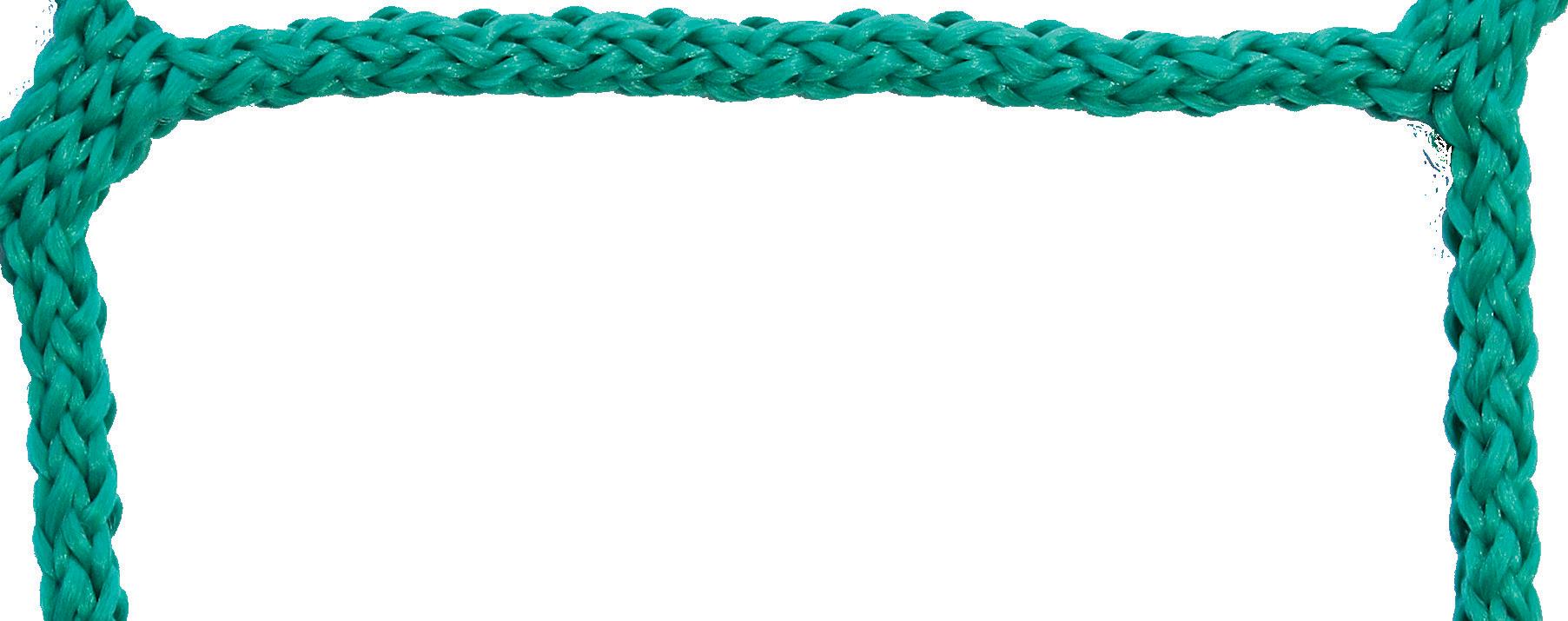
“All of our safety documentation has been produced in such a format as to ensure that it complements the overall site safety policy and manual that the Principal Contractor is required to establish on all projects,” says Daly.
Click here to read inspection guidelines

Iharboured a fervent hope that 25 years of development and refinement of Wayne Milicich’s injury prevention model might contain a few surprises.
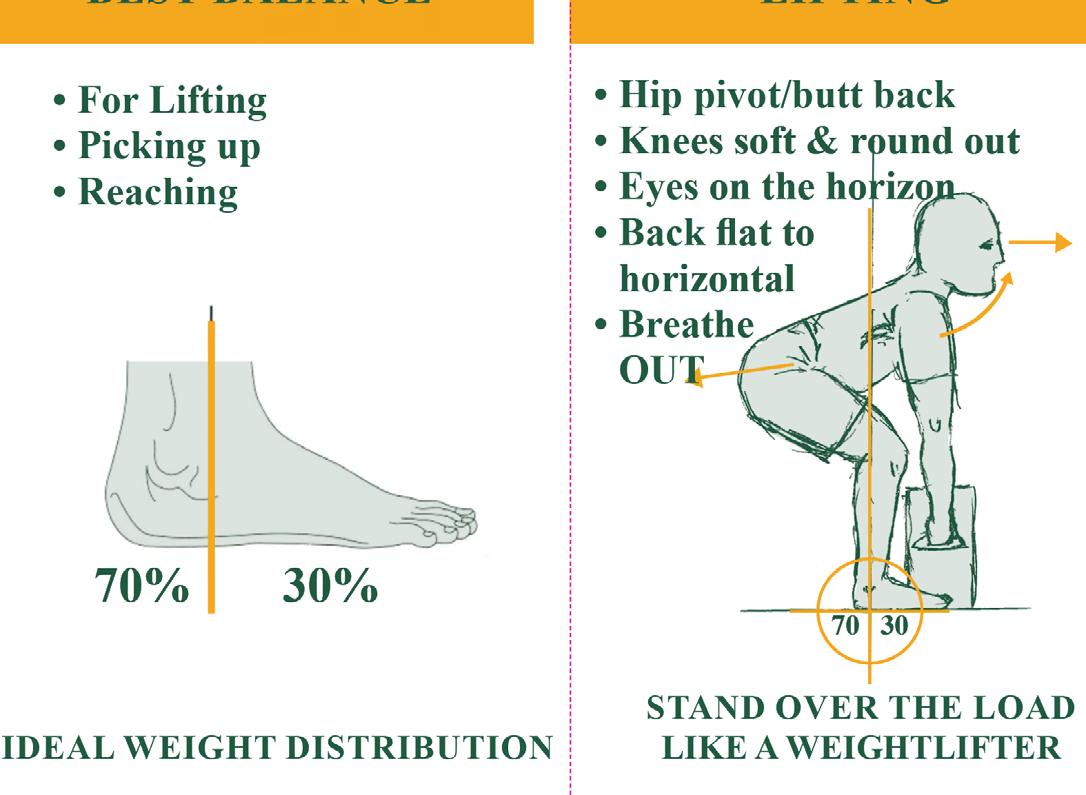
The prospect of four hours in what I suspected could be a moralising lecture about how to lift a box was not enthralling. I could see, as we shuffled into the training centre, that the rest of the class felt the same, with a range of resigned, bored and cynical faces.
We were wrong. Boy, were we wrong. Participants soon learned “it was all about them” and their individual quality of life. And how 30 seconds after the training would break the harmful muscle memory that had taken over the way we did things.
“The programme is about unlearning what we learned between the ages of about eight to 13 years old and restoring all the movement patterns that we learned naturally during the first five to eight years of our life,” says Milicich.
For example, children all demonstrate best balance, unlike most adults. About 80 percent of the adult population “half breathe” from the apical area of the lungs as opposed to the diaphragm and lower lobes of the lungs, according to Milicich. “Children all naturally breathe from their belly, diaphragm, unless they are stressed.”
The most hardened cynics in our group quickly became engaged in the programme through a series of
practical truths, illustrated by a range of interactions, sometimes with a workmate.
We emerged half a working day later wondering who to sue for the preventable harm I have inflicted by following instructions. Life quality did not require lifetime dedication, just a reordering of basic instincts and tossing out a few myths. For our group, the quality of life had become anchored forever around balance and the 70/30 weight split between heels and toes.
We were converts to breathing out like weightlifters, sticking out our butts and letting tummies and abdominals do their thing - we discarded posture misinformation and stress and replaced it with comfort, a safe and secure back and no pain.
Optimum’s programme is of suggested solutions, not imperatives. “When we do this training, it is to benefit the individual. The company
clips the ticket and gets a benefit only when the individual benefits.”
“You cannot stand on a platform and tell people they are wrong. When a person’s belief is challenged, they will do anything to defend that truth as it is what they believe and know and have lived by. The only way to expose the false belief is to lead someone to find the truth for themselves.
In most cases following instilled poor habits is akin to
tapping yourself lightly on the head with a hammer for years. Do it enough times and you will end up permanently damaged.
You cannot separate work safety and whanau safety – they are two sides of the same coin, according to Milicich. Health and safety at home and work are just a component of our life quality. Not something that is separated out with its own rules to be applied at specific times and locations.
To a person, we emerged
ready to retrain our misguided muscle memory with the 30-secondsa-day-worth of drills to reprogramme our muscle memory that had taken us just four hours to master.

“The training empowers people to work out the truth for themselves and trust themselves. You are the only person who can determine what works best for you. Trust yourself to make a good call,” says Milicich. With no pen, paper or tables in the room, this programme is “pure adult facilitation of kinesthetic learning followed by cognitive understanding. It is simple to restore what was once in the muscle memory when we were five to eight years old. The original neural pathways just open up again,” he says. We learned and now retain what we learned.
“Stress is recognized as a major cause of MSD and auto-immune disease. We help people understand how their body manifests stress and equip them with the understanding and tools to manage themselves during stressful times,” says Milicich.
Optimum’s facilitation process has four specific steps. When applied correctly to the session, most often the learner has no idea of what
has happened, but they do recognise that their life has changed for the better.
Our session began with participation exercises which showed the overriding importance of balance.
The 70/30 rationale was enough to consign to the bin, along with a flurry of other medical myths, the long-held and totally wrong “bend your knees and keep your back straight” doctrine.
It soon became apparent why Optimum’s quality of life programme is used by many of the country’s most astute corporations in an age where time “off the floor” is critical to the bottom line and many companies look only to tick the boxes of compliance.
The benefits are equally cost effective, available and absorbed by SMEs. My class had only nine other participants so having a cast of thousands is not essential – or even recommended.
“Move Smart Think Smart is about addressing the underlying causes of muscle and joint pain that occur as we interact with inert objects both at work and at home. Home injuries affect the workplace. Workplace injuries affect the home and family,” says Milicich.
“Either way the quality
of life of a person is compromised. The traditional medical model calls the problem ‘nonspecific back pain and occupational overuse’. In fact, the pain is about inadvertent personal misuse of the body -- it is very specific.”
The bio-medical model reckons back pain is normal. “No, it is not normal,” says Milicich. “It is common, and the medical model is unwittingly part of the problem.

“Good posture” is nothing more than an old wives’ tale based on the military model of control and it is still believed today. A teacher tells children to sit up straight as a means of controlling the class. It is now portrayed as good posture.
“The medical field is littered with information and advice that was eventually proven wrong and retracted. Some of our western cultural beliefs are based in nothing more than decades or centuries old beliefs and mores.
The sad thing is that more than 80 percent of MSD's are inadvertently and unwittingly self-inflicted. People hurt themselves as they interact with inert objects, and they don't even realise it, says Milicich.
“The only way a box can hurt someone is if it is flying
through the air and strikes them. Or if it is moving on a conveyor and they put their hand where they should not.
A spade and the ground are both inert. To suffer pain while digging a hole is the person hurting themselves as they interact with the spade and ground.
The pain is a direct result of poor skills and technique of movement -- self-inflicted pain.
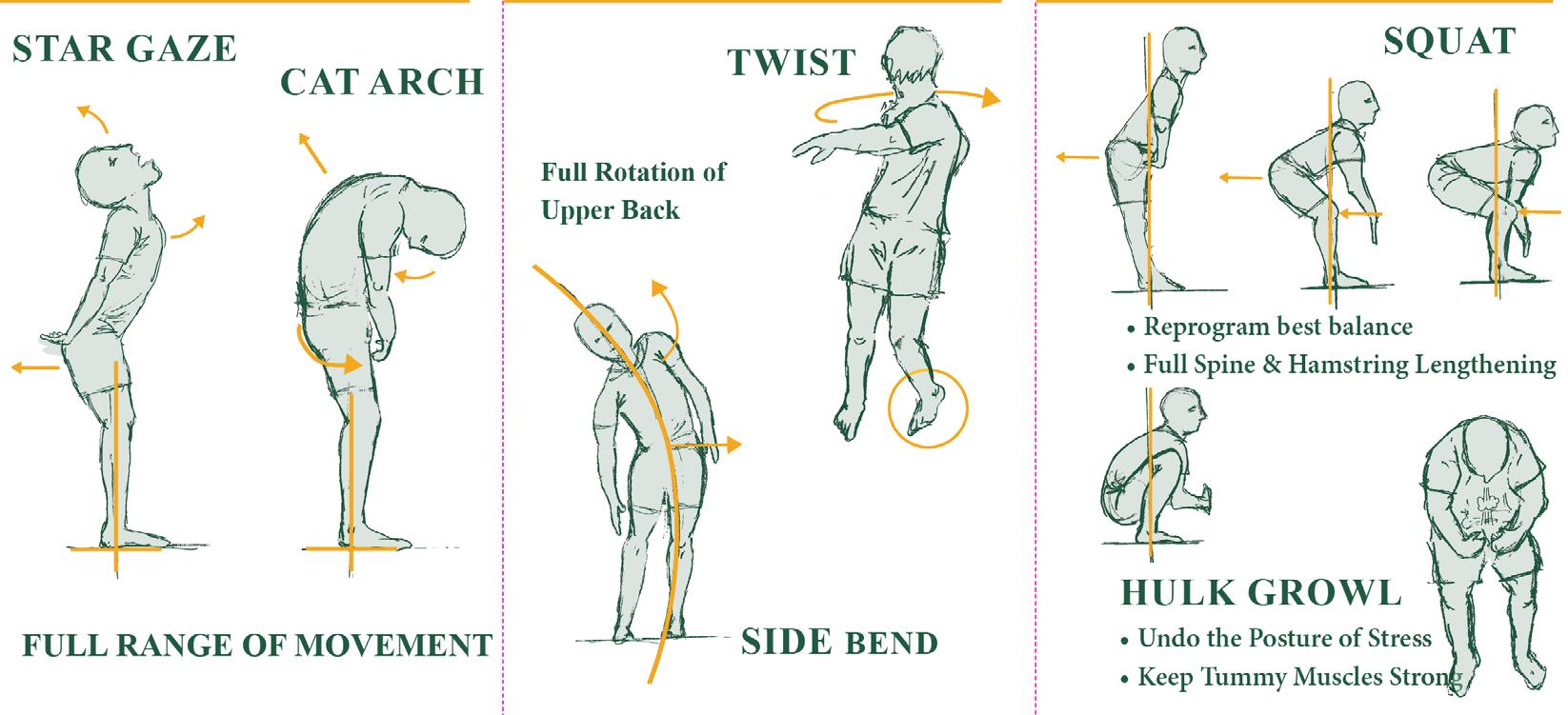
Most people blame something or someone for this self-inflicted injury. At that point, only the symptom can be addressed with drugs and therapy.
The problem returns as they repeat their old thinking and poor technique once the symptom has eased.
“No one deliberately hurts themselves. Given the opportunity, everyone makes the right choice,” says Milicich.
To a person, everyone was engaged for the full duration of training, always relevant, interesting, practical and beneficial to each person. We felt equipped and empowered to take back responsibility for ourselves. I personally still muse over and apply the learnings. My years of knee pain has gone.
A New Zealand company is deploying integrated and wearable robotic solutions and technology that could prevent workplace injuries and futureproof workforces worldwide
Exxovantage combines exoskeletons and exosuits, workplace wearables, AI, data analytics and cutting-edge risk management tools to increase operational efficiencies for the logistics, manufacturing, retail, aviation, defence, construction, dairy farming, horticulture, mining and healthcare sectors.
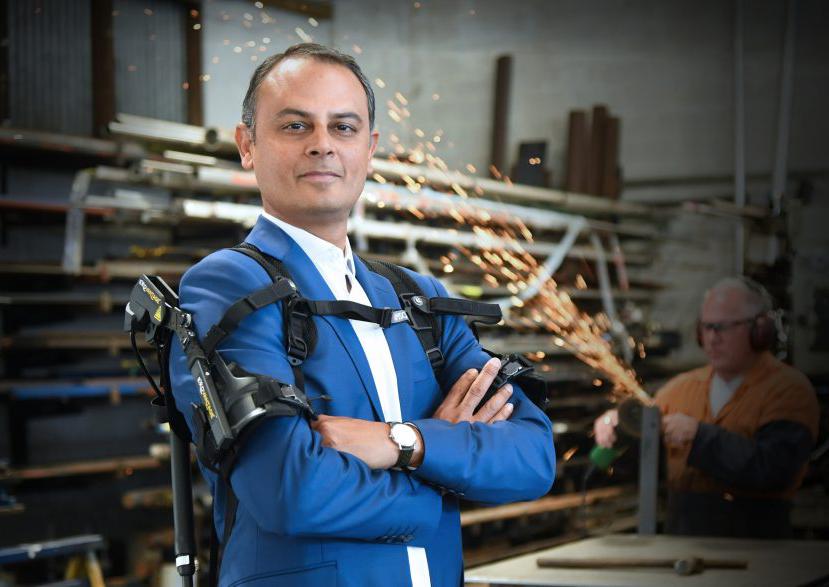
In the current climate of stark skill shortages, lost time to injuries, and a focus on the mental health
of the nation’s workforce, supporting manual labour tasks with robotics and data analytics may reduce the cost of staff turnover and close the skills gap — while boosting staff engagement and productivity.
Arnaud Daurat, Founder and Global CEO of Exxovantage, says that supportive structures worn on the body to relieve strain on the musculoskeletal system are the way of the future.
“Worldwide, the use
of exoskeletons for rehabilitation purposes has grown. With an increase in the number of people with physical disabilities and our ageing workforce, it’s common sense that ergonomic support is used to prevent repetitive stress injuries.
“Our objective is zero harm, to allow workers to perform their daily tasks without injury or musculoskeletal disorders.
In New Zealand, musculoskeletal disorders
(MSDs) account for almost a quarter of all sick days.
Daurat says Exxovantage solutions and technologies have been proven to reduce injury-causing bends by 75%, sprains and strains by 30%, downtime due to injury by 25%, and absenteeism by 25% while increasing staff attraction and retention by 20% and productivity by 16%.
“With biomechanical augmentation, we can enhance what people can do with their natural
abilities. Exoskeletons support the upper limbs of the wearer, using their strength and saving energy when in motion.”
Daurat is passionate about offering organisations workforce solutions based around predictive injury prevention, working with them early to undertake an audit of the internal processes, and giving workers access to wearable devices that inform them of health and safety issues before they happen.
“Our wearable devices are embedded with builtin sensors that keep track of body movements and provide real-time biometric data to help highlight risks to a person’s health due to impacts such as repeated movements and posture at work.
“These devices alert them to efficiencies and flag if they are too close to a hazard. They will even flag dehydration, reminding people to increase their water consumption while working.”
While the deployment of wearables has started to take off in New Zealand, globally, Daurat cites that their manufacturer has already distributed 150,000 wearables to the world’s largest e-Commerce organisation, with an additional 400 warehouses to receive the technology.

Auckland business, Wrapid Man, specialises in commercial and residential shrink wrapping. Their team has consistently been wearing Exoskeleton HAPO back exoskeletons for the last three months since participating in an onsite audit and fitting by Exxovantage.
Director Christo Botha says that while his team were keen to adopt the technology from the start,
they were thrilled to see the positive difference the exoskeletons have made in their job – citing increased endurance and a quicker recovery from the day’s work after wearing the supportive structure.
Botha discovered the products at a scaffolding conference and was
surgeon wanted to learn more about the support gained from wearing an exoskeleton.
“It’s an occupation that requires a great deal of leaning over and working in a strained position,” said the doctor.
After trialling an exoskeleton in his everyday
exoskeletons after seeing them presented at a Meat Industry Association research and innovation workshop.
“Trialling a few exoskeletons from the Exxovantage range made sense. We want to give our staff longevity in the industry and help injured people return to work,” she said.
During an initial trial with the exoskeletons, McCauslin learnt that one staff member, an older team member with a physically demanding role, was already wearing a back support brace. After one day of trials, he could retire his back brace and fully adopt an exoskeleton.
Dubbed the next generation of integrated solutions and technologies, exoskeletons and exosuits can increase the wellbeing of their wearers, something Brittany was motivated to achieve for their business.
She said, “One of our team found, after using an exoskeleton for one session of 135 minutes, that same night, they had the best sleep in years. Their usual tossing and turning from back pain was absent.”
intrigued to discover a potential solution for reducing the risk of injuries in his team.
“It’s a manual job; it’s hard on your knees and back. We’re lifting heavy materials and do a huge amount of crouching down. The guys tell me wearing it helps to reduce fatigue and gives them strength to stand up from kneeling.”
An Auckland-based oral and maxillofacial surgeon backs up Botha’s experience. After injuring his back in a sporting accident years ago, the
work and during surgeries, he found it a good tool to reduce the wear and tear on his back. Comfortable to wear and taking the strain off his back, he plans to keep using his exoskeleton, believing they have a future in his industry.
The meat processing industry is plagued with high absenteeism and injuries due to the physical nature of the job.
Brittany McCauslin works for an Otago-based meat processing business. She led the procurement of different models of
The business has expanded to Australia, the USA, Africa and Singapore, with bold plans to become the global leader in wearable robotics technology.
Daurat is excited about the business’ innovation pipeline and what this means for humankind.
“We are solving human, technical, and business challenges to increase productivity and staff wellbeing. It’s a privilege to partner with sectors and businesses to protect their most important asset –their people.”
Bastion’s comprehensive range of barrier protection solutions are trusted widely by industry professionals throughout Australasia.
It’s a level of trust that has been achieved through consistent delivery of quality assurance over almost two decades in the industry.
When it comes to choosing suppliers, Bastion has a strict selection policy. They only work with internationally certified suppliers who
have strict quality control measures in place. For extra assurance Bastion regularly monitor their manufacturers’ production facilities and test quality control procedures through a third-party auditor.
Choosing the right suppliers is top of mind for Bastion, as it means
consistently delivering on their promise to protect New Zealanders with excellent quality product that is fit for purpose.
High stock levels & Specialist Team
Bastion is committed to maintaining high stock levels. With an extensive and well-resourced logistics
channel and strong supplier relationships, they are well positioned to keep customers stocked throughout the current global supply chain disruptions.
With just under twenty years of experience, Bastion are barrier protection specialists. Their experienced team provide expert support to help customers select products that are fit for purpose, fit correctly and are suited to specific industry applications.
Bastion Pacific NZ is a kiwi owned family business. Providing disposable barrier protection solutions, janitorial products and safety gloves to businesses throughout New Zealand and Australia.

If you’re not sure about a product, why not order a free sample?
Reach out to the Bastion team at enquiries@ bastionpacific.co.nz.
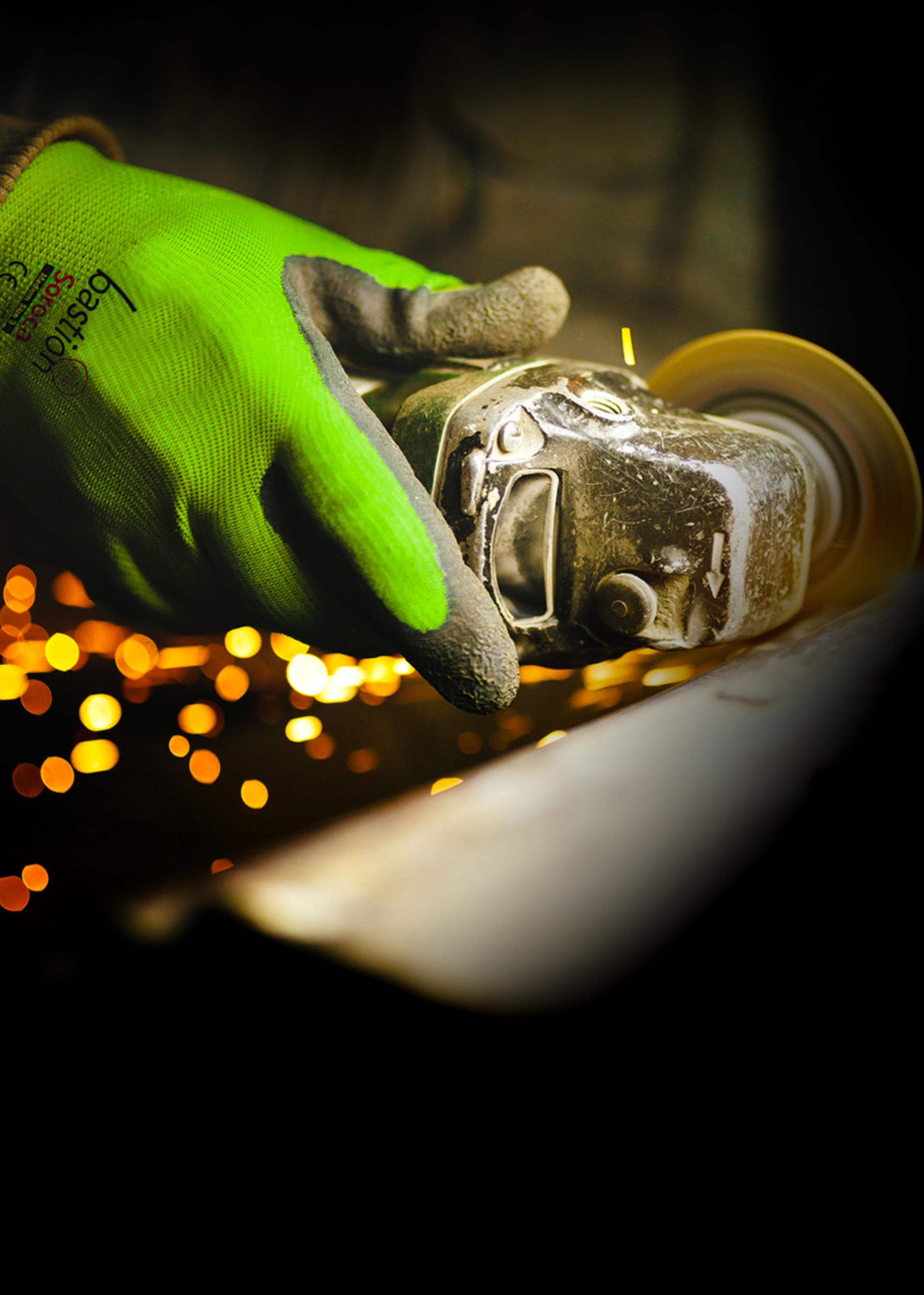
In 2020 the European Agency for Safety and Health at Work (EU-OSHA) initiated a four-year research programme on digitalisation and occupational safety and health (OSH) with the aim of supporting evidence-based policymaking by providing deeper insights into the consequences of digitalisation on workers’ health, safety and wellbeing and how these are addressed at the research, policy and practice levels, as well as by describing examples of successful practices.
The report presents findings from EU-OSHA’s project on new forms of worker management through AI-based systems (AI-based worker management, AIWM) and OSH.
The aim was to identify gaps, needs and priorities for OSH and make recommendations for policy, research and practices in order to support decision-making discussed at a high-level workshop that concluded the project.
Based on the findings of the research, there are a number of recommendations that can be used to mitigate risks to workers’ safety, health and wellbeing that are associated with the design and use of AIWM systems.
• Making the design, development and use of AIWM systems human-centred, so

The introduction of AI in the workplace brings along innovative developments but also challenges and risks for workers’ safety, health and wellbeing, finds a report commissioned by the European Agency for Safety and Health at Work
that they are used to support workers and leave humans in control. This would also guarantee that the compassion, empathy and care for workers brought by humans is not replaced by computer decision-making that solely tries to increase profits for a business.
• Ensuring workers’ participation, consultation and social dialogue. Workers should be included in the design, development and testing phases, and ex ante and ex post assessments, as well as usage of AI-based systems. The inclusion of workers at all stages of AI development and usage will contribute to making such systems trustworthy, human-centred and remaining under human control. This can also be achieved by enforcing the co-governance of AIWM systems, giving a say to workers on how AIWM is developed, acquired, introduced and used. This is key to preventing the possible risks of AIWM to
OSH.
• Fostering a holistic approach in evaluating AIWM systems encompasses including different stakeholders in the evaluation process, as well as ensuring that such systems are not evaluated in a vacuum; it also covers the effects AIWM might have on workers and society as a whole. The evaluation process should also be a dynamic process rather than a one-off exercise as AI-based systems are able to evolve through self-learning, which might lead to some systems that were safe in the past becoming dangerous for workers.
• Improving the design, development and use of AI-based systems by making the functioning and purpose of AIWM transparent, explainable and understandable. This might be ensured by introducing more binding requirements for AIWM providers and developers to ensure that workers’ health, safety and wellbeing
are already considered from the design stage. This should also go hand-in-hand with a strong enforcement policy ensuring that organisations comply with regulations.
• Establishing a clear line of responsibility indicating who is responsible for ensuring that an AIWM system does not cause harm to workers, break the law or malfunction. This includes establishing oversight mechanisms, remedies on how the negative effect of AIWM can be mitigated, and a course of action on what to do if managers fail to govern the AIWM system. Ensuring the line of responsibility could also go beyond simply stating that an employer in general is responsible for AIWM systems by instead requiring organisations to specifically name responsible managers.
• Improving workers’ privacy and data protection by increasing transparency about data collection and usage and introducing
better reporting mechanisms on misuses of AIWM tools. More specifically, workers should have the right to edit or block algorithmic inferences, and to contest automated decisions, and they should also be ensured full freedom to refuse to give consent to collect their data by additional provisions prohibiting lay-offs or any other negative actions against workers in these cases. This can be expanded upon by ensuring workers the right to an explanation for decisions made by algorithms. This includes what private data the algorithm used, how these data were collected and how it made its decision.
• Ensuring the right to disconnect for workers. In addition to its primary goal of guaranteeing workers the right to disconnect from work during non-working hours, it could also serve as a means to ensure workers’ privacy and personal data protection, in particular when it relates to a disproportionate amount of monitoring and surveillance not strictly necessary for a legitimate purpose.
• There is a need for knowledge exchange, dissemination and awareness building on AIWM and how it might affect OSH. This might include creating a dialogue involving relevant stakeholders, such as representatives of workers, employers, OSH
authorities, experts and AIWM tool developers. The dialogue should be open, allow all sides to express their opinions, and focus not only on what should be controlled, banned and mitigated, but also on how to ethically use AI-based tools.
• Worker privacy and data protection can also be improved by enhancing labour inspectorates’ capacities and cooperation with national data protection authorities. This includes improving their knowledge about AIWM and how it might affect OSH, as well as providing tools to labour inspectors for closer cooperation with data protection officers on questions relating to how AIWM and similar AI-based systems affect OSH.
• More education efforts that enhance workers’ and employers’ AI literacy by promoting qualification and skills development for AIWM applications. This would empower them to better understand AIWM systems and thereby be able to exert their right of consultation and participation in the design and implementation of such systems. Education and awareness-raising efforts should focus on ensuring that current and future AIWM systems put humans and their health, safety and wellbeing at the centre.
• Ensuring transparency between developers of AIWM systems and deploying organisa-
tions. This includes, but is not limited to, sharing with organisations how such a tool operates, how it makes decisions, what kind of risks and negative effects it can create, its benefits and drawbacks, and so on. However, if full transparency is not possible, any agreement should include the caveat that if a system causes harm and the deploying company has no right to demand that the system be changed, the system would be shut down at once by such system developers.
The usage of AIWM systems is steadily growing across companies and economic sectors, which can be explained by the fact that they allow organisations to improve productivity and efficiency. However, the introduction of such systems in an organisation can also lead to a large array of ethical and privacy issues, as well as to OSH-related risks.
Nevertheless, if AIWM systems are built and implemented in a trustworthy and transparent way based on workers’ information, participation, consultation and trust, and on the principle of minimisation of workers’ data collection and usage, AIWM systems may also provide opportunities to improve OSH in the workplace.
Trustworthy AIWM can be built by using a human-centred and human-in-command approach, guaranteeing equal access to information of employers, managers, workers and their representatives, and the consultation and participation of workers and
their representatives in the decisions taken with regard to the design, development, implementation and use of the AI-based management systems and in the decisions taken are key.
This also includes respecting human autonomy, preventing harm, ensuring fairness, and establishing the AIWM systems’ explicability. To a large extent, this can be achieved by considering workers and their health, safety and wellbeing from the very initial design phase of AIWM systems and related subsequent programming. This, in turn, will allow to ensure that when used, AI does not replace traditional human management practices but supports them.
Human-centric AI can also be further fostered by ensuring worker privacy and that the collected data is not abused by AIWM system developers or employers. There are also still some gaps as personal data, such as workers’ emotional wellbeing, can be derived using AIWM systems from public data, such as workers’ body language, facial expressions and tone of voice.
Worker privacy might be further fostered by ensuring that they have a right to an explanation of how AIWM systems that are used on them work. This includes an explanation on a number of aspects including what kind of data the systems collect, how this data is used, and how decisions are made based on this data.
Read the full report
A group of doctors and public health experts are calling to suspend development of artificial intelligence until sufficient regulations are in place
The researchers cite three major reasons AI currently poses a risk to public health and safety:
• Its ability to ramp up surveillance capacity which can manipulate consumer choices, spread misinformation and social division and even enable government oppression.
• Current and potential development of military weapons that can kill entirely without human supervision
• The loss of jobs that will come as AI allows the automation of more types of work.
• Certain types and
applications pose “existential threat to humanity,” they warn.

Despite its transformative potential for society, including in medicine and public health, certain types and applications of AI, including self-improving general purpose AI (AGI), pose three sets of threats associated with the misuse of AI and the ongoing failure to anticipate, adapt to, and regulate the transformational impacts of the technology on society.
The first of these comes from the ability of AI to rapidly clean, organise, and analyse massive data sets consisting of personal data, including images.
This can be used to manipulate behaviour and
subvert democracy, they explain, citing its role in the subversion of the 2013 and 2017 Kenyan elections, the 2016 US presidential election, and the 2017 French presidential election.
“When combined with the rapidly improving ability to distort or misrepresent reality with deep fakes, AIdriven information systems may further undermine democracy by causing a general breakdown in trust or by driving social division and conflict, with ensuing public health impacts,” the researchers say.
AI-driven surveillance may also be used by governments and other powerful actors to control and oppress people more directly, an example of which is China’s Social
Credit System, they point out.
This system combines facial recognition software and analysis of ‘big data’ repositories of people’s financial transactions, movements, police records and social relationships.
But China isn’t the only country developing AI surveillance: at least 75 others, “ranging from liberal democracies to military regimes, have been expanding such systems,” they highlight.
The second set of threats concerns the development of Lethal Autonomous Weapon Systems (LAWS)—capable of locating, selecting, and engaging human targets without the need for human supervision.
LAWS can be attached to small mobile devices, such as drones, and could be cheaply mass produced and easily set up to kill “at an industrial scale,” warn the authors.
The third set of threats arises from the loss of jobs that will accompany the widespread deployment of AI technology, with estimates ranging from tens to hundreds of millions over the coming decade.
“While there would be many benefits from ending work that is repetitive, dangerous and unpleasant, we already know that unemployment is strongly associated with adverse health outcomes and behaviour,” they point out.
To date, increasing automation has tended only to shift income and wealth from labour to the owners of capital, so helping to contribute to inequitable wealth distribution across
the globe, they note.
“Furthermore, we do not know how society will respond psychologically and emotionally to a world where work is unavailable or unnecessary, nor are we thinking much about the policies and strategies that would be needed to break the association between unemployment and ill health,” they highlight.
But the threat posed by self improving AGI, which, theoretically, could learn and perform the full range of human tasks, is all encompassing, they suggest.
“We are now seeking to create machines that are vastly more intelligent and powerful than ourselves. The potential for such machines to apply this intelligence and power— whether deliberately or not—in ways that could harm or subjugate humans—is real and has to
be considered.
“If realised, the connection of AGI to the internet and the real world, including via vehicles, robots, weapons and all the digital systems that increasingly run our societies, could well represent the ‘biggest event in human history’,” they write.

“With exponential growth in AI research and development, the window of opportunity to avoid serious and potentially existential harms is closing. The future outcomes of the development of AI and AGI will depend on policy decisions taken now and on the effectiveness of regulatory institutions that we design to minimise risk and harm and maximise benefit,” they emphasise. International agreement and cooperation will be needed, as well as the avoidance of a mutually destructive AI ‘arms race’,
they insist. And healthcare professionals have a key role in raising awareness and sounding the alarm on the risks and threats posed by AI.
“If AI is to ever fulfil its promise to benefit humanity and society, we must protect democracy, strengthen our publicinterest institutions, and dilute power so that there are effective checks and balances.
“This includes ensuring transparency and accountability of the parts of the military–corporate industrial complex driving AI developments and the social media companies that are enabling AI-driven, targeted misinformation to undermine our democratic institutions and rights to privacy,” they conclude. BMJ
Global HealthIn a new study, participants showed more empathy for an online anthropomorphic artificial intelligence (A.I.) agent when it seemed to disclose personal information about itself while chatting with participants. Takahiro Tsumura of The Graduate University for Advanced Studies, SOKENDAI in Tokyo, Japan, and Seiji Yamada of the National Institute of Informatics, also in Tokyo, present these findings in the open-access journal PLOS ONE on May 10, 2023.
The use of A.I. in daily life is increasing, raising interest in factors that might contribute to the level of trust and acceptance people feel towards A.I. agents. Prior research has suggested that people are more likely to accept artificial objects if the objects elicit empathy. For instance, people may empathize with cleaning robots, robots that mimic pets, and anthropomorphic chat tools that provide assistance on websites.
Earlier research has also highlighted the importance of disclosing personal information in building human relationships. Stemming from those findings, Tsumura and Yamada hypothesized that self-disclosure by an anthropomorphic A.I. agent might boost people’s empathy toward those agents.
To test this idea, the researchers conducted online experiments in which participants had a textbased chat with an online A.I. agent that was visually represented by either a human-like illustration or an illustration of an anthropomorphic robot. The chat involved a scenario in which the participant and agent were colleagues on a
lunch break at the agent’s workplace. In each conversation, the agent seemed to self-disclose either highly work-relevant personal information, less-relevant information about a hobby, or no personal information.
The final analysis included data from 918 participants whose empathy for the A.I. agent was evaluated using a standard empathy questionnaire. The researchers found that, compared to less-relevant self-disclosure, highly work-relevant self-disclosure from the A.I. agent was associated with greater empathy from participants. A lack of self-disclosure was associated with suppressed empathy. The agent’s appearance as ei-
ther a human or anthropomorphic robot did not have a significant association with empathy levels.
These findings suggest that self-disclosure by A.I. agents may, indeed, elicit empathy from humans, which could help inform future development of A.I. tools.
The authors add: “This study investigates whether self-disclosure by anthropomorphic agents affects human empathy. Our research will change the negative image of artifacts used in society and contribute to future social relationships between humans and anthropomorphic agents.”
The Pasifika Medical Association Group emphasise
that AI has some limitations and that every researcher using it should check the output carefully.
While AI language models such as ChatGPT can help researchers write scientific articles, for instance by identifying potential collaborators, conducting a literature review, writing sections of articles, and producing abstracts, AI models can provide incorrect answers, or can introduce bias if information about a topic is left out of its data sources.
AI tools are not yet on par with medical writers, and while AI could probably be used as a writer for some parts of the article writing process, it shouldn’t be credited as a co-author.

AI can sometimes give incorrect answers or show signs of bias, which has the potential to be dangerous after a recent study found it is capable of eliciting empathy from humans
W i t h y o u r s u p p o r t w e c a n c o n t i n u e t o p r o v i d e p ra c t i c a l h e l p , c a r e a n d c o m f o r t .
A c c o m m o d a t i o n a n d h o m e v i s i t s a r e j u s t t w o o f t h e w a y s w e s u p p o r t N e w Z e a l a n d e r s a f f e c t e d b y c a n c e r.

Many business owners were forced to pivot their careers in response to the pandemic. Now they may need to pivot once more, as Artificial Intelligence (AI) threatens to decimate entire workforces across multiple industries.
Small business insurance expert Sean Craigen says business owners may need to take the lessons learned from the COVID-19 pandemic and adapt their skillsets to this new environment that is swiftly changing.
“It’s important to factor in these black swan events
and technological shifts when assessing the risks they face,” says Craigen, Country Manager at business insurance service BizCover.
“While some risks can be mitigated by insurance, others will need to be reduced in other ways.”
The Covid-19 pandemic was a challenging time for many people across the world, and New Zealand small business owners like John Davey certainly felt its impact.
He and his wife, Trudi,

The pandemic brought about significant changes in the business landscape. Stories like John Davey’s may guide the way as new challenges such as AI are set to once again change the status quo
were running a successful international business that helped first year university students in 5 countries adjust to university life. Then the pandemic struck.
“It just got cut off at the knees,” says Davey.
“Covid came around and we were no longer able to do live presentations, which was our entire business model.”
Like many other industries, universities moved to an online model as lockdowns reduced the ability to meet in person.
With no customers coming through the doors, businesses had to come up with new ways to reach their customers, often through online channels.
The move was swift in New Zealand, with nearly 30% of the workforce quickly moving from centralised work locations to working from home.
Cafes started offering delivery services, while some retail stores started selling their products through online marketplaces.
But after looking to transition his business to film and distribute the videos online, Davey hit a snag with the production company and quickly fell into debt.
“We realised it was unsustainable.”
Realising he had to adapt to the conditions, Davey turned his career towards his hobby, launching his handyman business, Boots and All Home Services, out of his home in Christchurch.
“Boots and All began as a response to the pandemic. It’s been two and half years now and I haven’t looked back since,” says Davey.
Being self-employed all his life, Davey knows a thing or two about what it takes to run a small business and change careers.
“I’ve made a living being a juggler, a corporate hoaxer, and a university mentor and now I’m making a perfectly good living being a handyman,” he says.
Davey’s dedication and flair even helped him win the APAC Business Awards last year, taking out the Most Creative Handyman on the South Island.
From landscaping and gardening to building repairs and everything in between, Boots and All covers a wide range of services.
Craigen says this approach helps businesses reduce the overall risk of being over-reliant on one service.
“You don’t want to put all your eggs in one basket only to find that the basket is being taken away because of reasons outside your control,” he says.
Davey says the lesson he learned throughout the pandemic was to approach his career with a sense of fortitude and adaptability in equal parts.
“You can do it – be prepared, do the research, and have a vision and stick to it.”
“But equally, when
conditions change and your vision is no longer viable, be adaptable and move your career forward with the times.”
Davey’s story is a testament to the resilience and adaptability required of small business owners in today’s ever-changing environment.
By pivoting his career in response to the pandemic, he was able to survive and even thrive during a time of significant uncertainty.
The same holds true for the looming threat of AI job loss.
While AI offers many benefits such as increased efficiency, cost savings, and improved customer experience, it also poses a significant risk to jobs across various industries.

Worldwide, more than 400 million workers are expected to lose their jobs to AI by 2030 – and that prediction was made in 2017 well before the rise of AI-generated search engines.
“It’s important for small business owners to recognise the risk of technological shifts and take proactive steps to adapt to this new reality,” says Craigen.
Assessing risk is an essential part of running a successful small business, and the Covid-19 pandemic has shown us the importance of being prepared for unexpected events.
One way to mitigate risk is through business insurance, which can help protect your business from financial loss due to unforeseen circumstances.
“Insurance is vital for my business,” says Davey.
But while insurance can help alleviate certain risks, other risks such as AI and pandemics need to be addressed proactively.
While Davey feels safe that AI won’t be taking his job anytime soon, he says he is still prepared to be adaptable and take proactive steps to adjust his business model to new technologies and changing market conditions.
“By being resilient and willing to pivot your career, like Davey did with Boots and All, small business owners can position themselves to survive and even thrive in the face of uncertainty,” says Craigen.
“Don’t wait until it’s too late – start assessing your business risks today and take steps to mitigate them.”
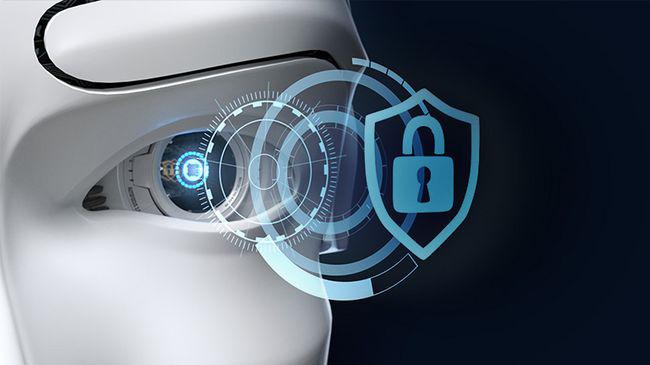
Security breaches and incidents are occurring with alarming regularity, with the big names reported in the media, only a fraction of the actual number of beaches taking place
Chris Fisher – Head of Security Engineering APJ, VectraIf we are to keep our people and systems safe, we must adopt a ‘not if, but when’ mindset and take steps to improve clarity of understanding and efficiency in catching and responding to threats.
Today’s world demands businesses to improve cybersecurity measures and gain greater visibility over threats and attack surfaces, else fall prey to sophisticated and targeted attacks. The more visibility an organization has, the better equipped to detect and respond in a timely, meaningful way. Luckily, with security of increasing importance,
there are more tools and solutions available, with the likes of artificial intelligence (AI) arming us with greater ability to understand our attack surface and catch threats fast.
Let’s first consider unknowns. The last couple of years have led to significant changes in how we work, including a massive rise in remote working, notable changes in systems, including a huge rise in cloud adoption, greater financial
pressure, and a struggle to find talent. These changes have led to a larger attack surface, more vulnerabilities and exploits, more tools and alerts, and smaller, more overworked teams. Meanwhile, attackers are more evasive and more sophisticated in their infiltration methods.
Analysts at Gartner predict that nearly half of cybersecurity leaders will change jobs by 2025 due to mounting stresses and burnout. Part of the problem, as highlighted by Gartner VP Analyst Paul Furtado, is insider risk and the fact that traditional
cybersecurity tools lack the ability to provide visibility over threats not only from outside but within the network.
It is true that oftentimes our attack surface is far larger than we assume. Let’s say I’m leading a security team and I’m responsible for taking care of 4,500 employees. I have an asset register that has logged 4,500 laptops, 2,500 servers, and I have 7,000 assets total on my network. However, it also shows that I have 15,000 active IP addresses on the network.
It’s not an uncommon statistic to only see 50% of
assets logged as endpoints, with the additional IP addresses routers, switches, printers, cameras, telephones and other services. These additional IP addresses could be personal devices on a guest network, cloud computing services and container workloads, or even traditional server application services that are running hosts of activities that aren’t being monitored.
Security teams are now tasked with defining vulnerabilities within each of these items and executing controls in those environments. For instance, closed operating systems don’t allow endpoint control measures, but an attacker can still leverage it for an attack. As a result, having a full depth of view is critical, and this is where technology solutions can shine.
Gaining visibility over an attack surface means understanding threat vectors that sit beyond what you as a company own. Consider unauthorized access. An increasingly common term, this refers to the act of gaining access to a computer system, network or application without express permission or authorization – as the name suggests. As was reported this month, Commonwealth Bank of Australia’s Indonesian unit was recently heavily impacted by an incident involving unauthorized access of a web-based software application used for project management. Similarly, AT&T has recently publicly announced that back in January, an unauthorized person breached a vendor’s system and gained access to the company’s Customer Proprietary Network Information (CPNI). We can’t take this lightly. Gaining visibility and clarity through expert tooling
reduces the burden on security teams and greatly improves an organization’s ability to understand threats, while also giving the chance to remediate quickly and effectively.

According to MarketsandMarkets, the AI in cybersecurity market size is valued at US$22.4 billion in 2023 and is anticipated to be US$60.6 billion by 2028, growing at a CAGR of 21.9% from 2023 to 2028. Meanwhile, IDC finds that cybersecurity has been identified as a top invest-
zero in on the behavioral aspect of attacks and considering all possible infiltration points. Attackers may be utilizing AI or automation to speed up their attacks, but this doesn’t inherently change their behavior. There are still certain actions they need to take to compromise a network, and these behavioral markers are what we can pick up on. Security teams are alerted to suspicious behavior, improving efficiency and helping them to sift through the noise of alerts.
ment APAC, with one of the leading categories being AI and machine learning. However, the study found that only 13% of Asia/Pacific respondents stated this was an investment priority, hinting that the region is lagging.
AI is a powerful tool in driving signal clarity and maximizing the use of our now more visible attack surface. AI enhances signal clarity by allowing us to
We hear from many organizations that they receive far too many false positives from their security tooling and security teams are inundated with information that they don’t know what to do with. Leveraging AI is not about replacing a human being, it’s about making what we do far more efficient and clarified. We can automate mundane tasks to free up employees, amplify an attack, and improve our ability to respond.
When it comes to response, we must know what to do with the attack alerts that come through,
otherwise all our clarity is for nothing. First, we determine what the attack is, and second what to do about it. Remediation is a helpful metric because it highlights that our goal is to remove the attacker from the environment but considers that there will be various ways to do this, depending on the systems and environment. There can’t be a blanket rule, we must be flexible, but we can create repeatable procedures that have flexibility built in. Metrics such as meantime to remediation can showcase the value and benefit of AI in terms of real outcomes and returns.
Moving forward we expect
to see CISOs and security leaders invest more into tooling that improves efficiencies and supports security teams in sifting through alerts and uncovering threats in a sprawling and broad attack landscape. The solutions are there, and they’re getting better all the time, it’s just understanding what they are and how they can be integrated for maximum benefit.
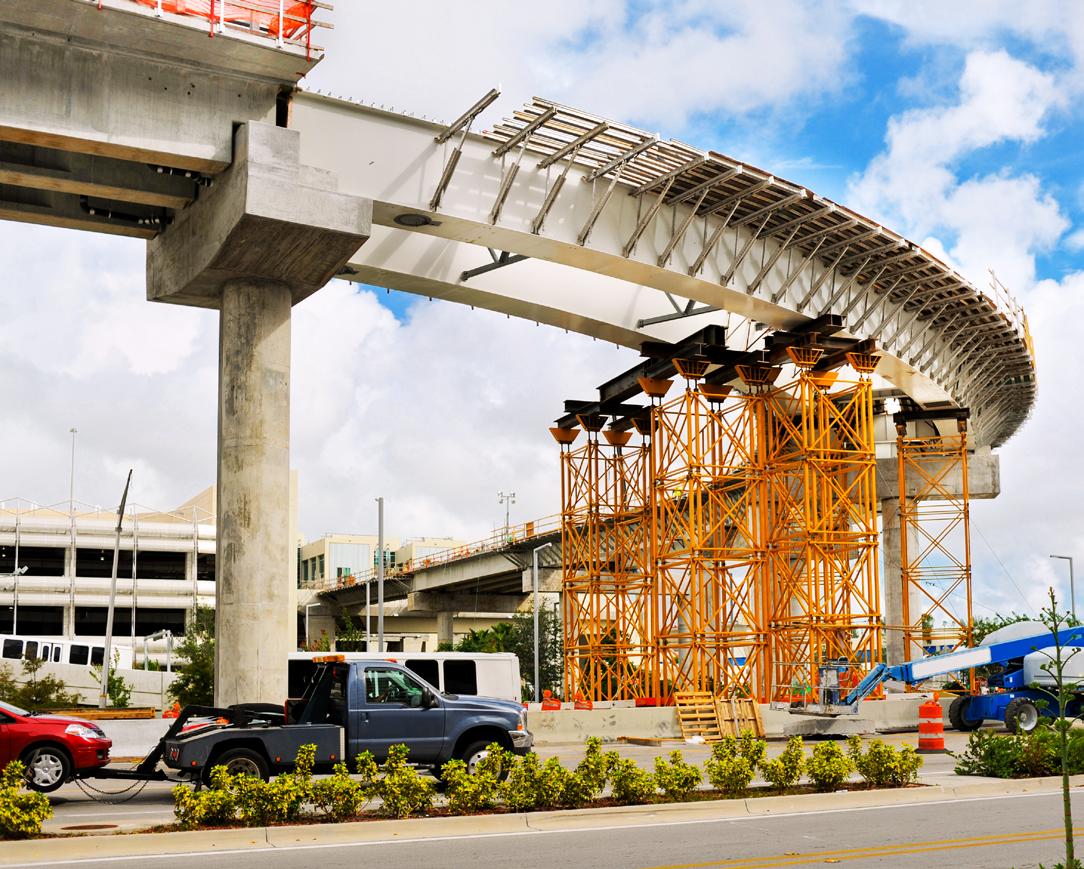
For nearly 40 years, building information modelling (BIM) has been a mainstay in architecture circles within the industry. But it’s only really gained ground in actual construction over the last two decades. If your company is among these near-future BIM adopters, what impact can you anticipate for your projects?
Financial efficiency with better use of capital project data
Having to rely on traditional construction practices involving 2D drawings and decentralised project details can be very limiting. Think of all the data that starts rolling in from day one. And it continues to accumulate when the completed project has been handed over to the owner’s operations and facility management team. It can be somewhat of a challenge, not to mention overwhelming, to track and understand everything. Buy that’s where BIM can help. What often makes it stand out is the BIM model’s ability to link directly to all the details associated with each individual element within it, from the smallest nail to the largest volume of concrete. Those include all usable and actionable data, including size, current cost, replacement value, lifespan, warranty information and more. These specific details — or project intelligence
— can be leveraged again and again throughout the project’s construction and beyond from within its own common data environment (CDE).
The key is to enter all that data into the BIM model during the estimate phase so it can serve as an interactive reference going forward. That’s when it becomes the foundation for data-driven decision making. Based on the model-linked data, the owner, contractors and other stakeholders can evaluate and agree on the most appropriate material and equipment options to invest in for the project based on cost effectiveness, durability and/or repair record, for example.
Building your project through BIM before real
construction begins opens up opportunities to experience things you hadn’t been able to with traditional design methods. For instance, designing a structure through BIM modelling frees you up to experiment with variations on materials, exteriors, door and window placement, layout configurations, and more. You’re able to virtually
for change orders for anything from minor alterations to full-on budget-eating rework down the road. You preserve not only the original cost and schedule estimate, but your profit margin.
Maximising design phase efficiency with BIM means being confident that those choices you make for your future capital projects are cost-efficient with regard to the construction estimate and to future maintenance after handoff.
walk through a model for a realistic view of the flow, the aesthetics, the space, and even any design mistakes to fix on the spot.
The BIM process also acts like a risk mitigation tool enabling you to discover structural and spatial interferences through automated clash detection. Catching these early enables you to correct them at the design stage — before they’ve had a chance to be built into the structure, which would set the stage
Being able to access and interact with all your projects’ constantly updated details at such a granular level is the kind of transparency that sets the stage for better understanding of the build and more effective communication among project teams, including those disciplines that may not normally have had a seat at the design table.
With all the data linked from the model housed in BIM’s CDE, it serves as a central hub where everyone can interact with the wealth of information it contains. Teams can interact with each other — sharing updated models, asking and answering questions, suggesting modification ideas, reviewing solutions to problems oftentimes before they occur.

The NZS 3910 is the contract most commonly used in New Zealand’s construction industry. However, recent industry and government reports have pointed to significant issues with the contract’s use that may erode relationships between clients and contractors. Such relationships play a critical role in driving construction sector productivity as well as value-for-money in public sector infrastructure spending (around $10 billion each year).
“There’s been overwhelming consensus from the construction sector that the contract needed a comprehensive update”, says Tracey Ryan, co-chair of the Construction Sector Accord.
“The proliferation of special conditions of contract that are often added to address shortcomings in the standard contract was a big focus. The fairness of some special conditions and the continual fiddling with the standard contract has caused big problems for the construction industry.”

In response, the New Zealand Infrastructure Commission, Te Waihanga and the Construction Sector Accord jointly commissioned a comprehensive revision of the contract with support from many within the sector. Standards New Zealand was appointed in late 2021 to lead and manage the revision process, which was done by a committee of
representatives from across the construction sector.
This review of 3910 is the biggest revision the contract’s had since 1987, and the draft version of the revised NZS 3910 is now out for consultation.
“This revised contract aims to bring NZS 3910 in line with the current legislative environment and market conditions,” says Accord co-chair Andrew Crisp.
“The goal is a balanced contract that is fair and reasonable for all parties. This is expected to reduce some need for parties to insert their own lengthy and complex special conditions and help ensure that the contract is fit for the industry in 2023 and beyond.”
The revised contract is only a tool, however, and its use must be accompanied by a major culture shift, says Ross Copland, Chief Executive of the New Zealand Infrastructure Commis-
sion, Te Waihanga.
“While these updates to NZS 3910 are an important enabler of better construction relationships, I want to emphasise the importance of a cultural shift in our industry from a mindset of contractual ‘winners and losers’, to one where public and private client-side leaders champion fair risk allocation and strive to eliminate, manage or accept some risk, rather than just transferring it.
“In order to rebuild a strong domestic construction industry and attract the talent we desperately need the sector needs to be profitable, fair and sustainable. Over the past decade we have seen far too many leading New Zealand construction firms fail and clients are most certainly worse off as a result. Client behaviour will make the biggest difference, so I’m asking our construction
industry leaders to take this opportunity to think about their contract and procurement processes and become champions for better contracting practice”.
The consultation document with the proposed revised standard form contract is now available on Standards NZ website and consultation on it closes on 30 June 2023. All feedback needs to be submitted through the Standards NZ consultation tool.
Register here for a webinar to hear from some of the review committee members on the key changes.
A 2018 report by consultancy Entwine identified significant issues with public sector procurement and contracting of major in-
frastructure projects which impacted the construction sector.
Following this, the Government and industry signed a Construction Sector Accord in April 2019, acknowledging the challenges facing the sector and signalling a shared commitment to transform it. This included a commitment to a more visible pipeline of work and procurement practices that are fair, efficient and predictable. A guiding principle for the Accord is the building of trusting relationships.
In February 2019, the Government announced it would establish the New Zealand Infrastructure Commission, Te Waihanga to help improve how New Zealand coordinates and plans its infrastructure, makes the most of the infrastructure it already has, and ensures that investment in infrastructure delivers what New Zealand needs.
The Accord and Te Waihanga are working to improve how government and the private sector work together to build public infrastructure. Their joint commissioning of the NZS 3910 revision is one example of this work.
Some key things raised in the Entwine report that this review is aiming to address include:
– Large numbers of special contract conditions effectively make contracts bespoke and these are often not reasonable or well understood by both the public sector and industry. These modifications, along with the use of unfamiliar contract terms, can lead to misunderstanding, confusion, and ultimately, litiga-
tion.
– Specific concerns regarding special conditions that are becoming more common in public sector construction contracts relate to the use of time bars, the lack of liability caps, and the impartiality of the role of the Engineer to the Contract.
– Risk should sit with the party best placed to manage it. The common aggressive approach to risk transfer often means that all risk sits with the contractor. Contractors may also face ‘risk transfer by stealth’ where risk is transferred through appended contract documents such as design specifications. This is not sustainable.
In 2019, the construction sector contributed seven percent to New Zealand’s GDP and employed 10 percent of the national workforce. A thriving sector is vital to New Zealand’s social and economic wellbeing. Additionally, the public sector is a major client of the construction sector, spending around $10 billion a year on procuring infrastructure – an amount that could increase significantly in coming years, as we work to address the infrastructure gap identified in Rautaki Hanganga
o Aotearoa New Zealand Infrastructure Strategy. Given such investment, it’s vital that New Zealanders get the best value from this public spending.
Timeline for: Conditions of Contract for Building and Civil Engineering Construction (NZS 3910)
lished following a major revision of its predecessor NZS 623.
2003 – contract updated to align with Construction Contracts Act 2002. 2013 – contract underwent a limited scope review.

2018 – report by Infrastructure New Zealand identified significant issues with public sector procurement and contracting of major infrastructure projects.
Creating Value Through Procurement: A Report into Public Sector Procurement of Major Infrastructure Projects (Entwine, 2018)
2019 – report by Treasury Infrastructure Transaction Unit found a ‘culture of mistrust’ between public sector (clients) and private sector (contractors). And that this results in lots of special conditions that modify standard construction contracts and lead to misunderstanding, confusion and,
ultimately, litigation. It also found a number of related issues.
An examination of issues associated with the use of NZS Conditions of Contract (Treasury Infrastructure Transactions Unit, August 2019)
2021 – Te Waihanga and the Construction Sector Accord jointly commission the revision of NZS 3910 as part of addressing issues raised in the 2019 report. The revision is carried out by a committee appointed by Standards New Zealand and that represents the range of industry and client interests.
9 May 2023 – revised NZS 3910 contract out for consultation.
30 June 2023 – consultation closes.
October 2023 – Standards New Zealand aims to release the final NZS 3910:2023 contract.
SLABX200 is specifically designed to deliver high compressive strength and improve insulation under concrete slabs.
Developed by trusted Kiwi insulation experts EXPOL, this exciting new innovation has quickly become the product of choice for specifiers and others in the construction industry.
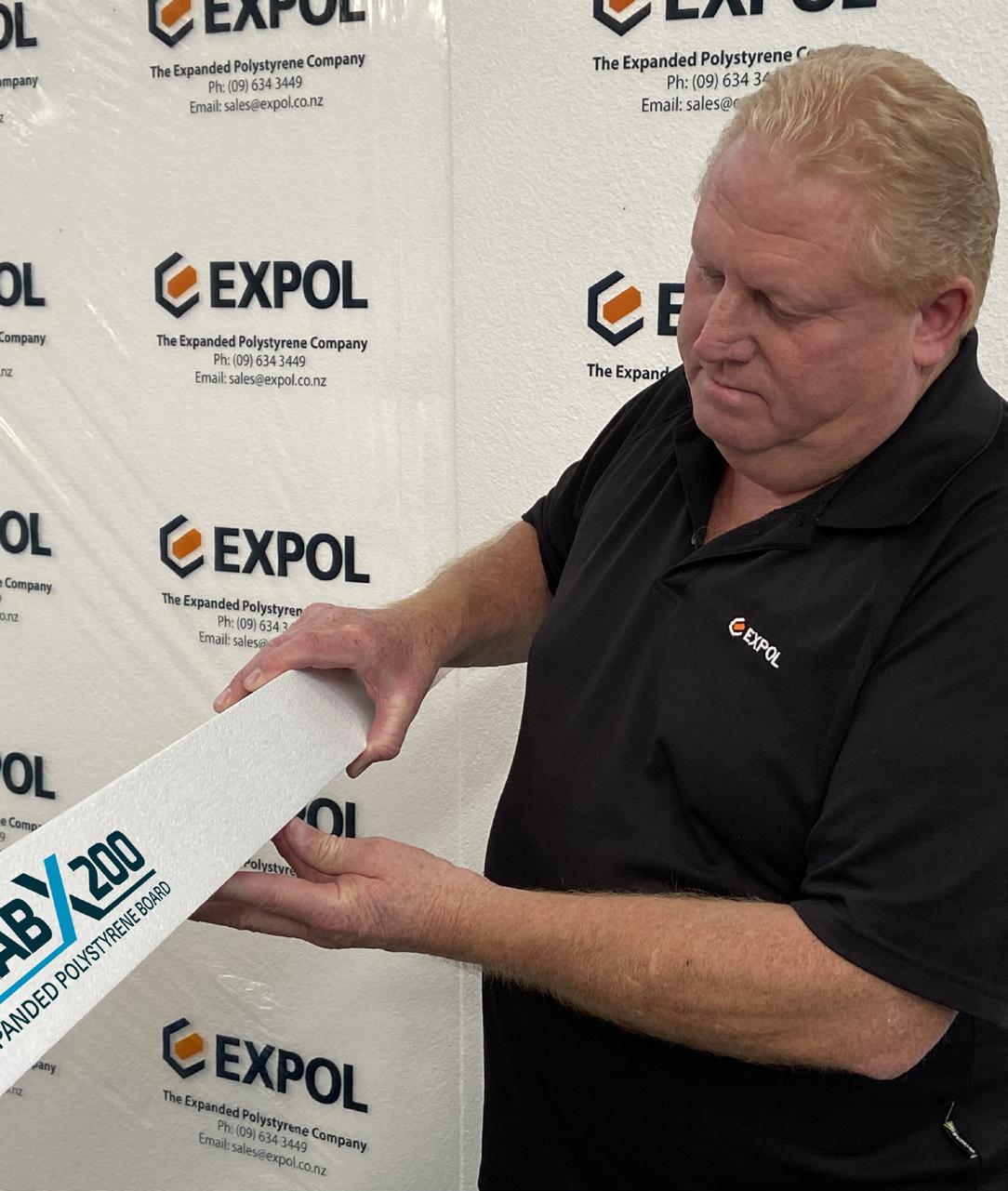
Why do I need to insulate the concrete slab?
Slab insulation is important not only to save on energy bills for future owners and tenants, but also to improve comfort.
Insulation will reduce heat loss and make the slab easier to heat. It offers a layer of projection against moisture and will provide a thermal mass to regulate temperatures.
If embedded floor heating is incorporated in a concrete slab-on-ground, the slab must be insulated so that heat from the slab is delivered up into the space above and not lost to the exterior and ground below.
Wayne
What makes SLABX200 different?
We chatted to Wayne Watson a Structural EPS and GeoFoam Consultant at EXPOL to see what makes SLABX200 different.
Wayne told us that due to its compressive strength rating of 200Kpa there is no comparable product on the market. He states “SLABX200 is specifically designed for insulating concrete slabs.
It has a rating of 200kpa at 10 percent compression or 20 ton per square meter.
a
check of SLABX200 to ensure it meets EXPOL’s high technical specifications.
Its high performance specs are designed to give Engineer’s peace of mind so that they can recommend this product with 100 percent confidence”.
The team at EXPOL recognised that there was nothing on the market that offered a cost-effective yet high performance solution to concrete insulation.
So they set about to develop a product with New Zealand residential and commercial projects in mind.
The durable nature of SLABX200 means that it won’t degrade over time, keeping its integrity for the life of the structure.
Due to the lightweight nature of Expanded Polystyrene the product is also easy to handle and install making quick work of slab insulation on site.
How does this product compare to Healthy Homes standards?
The Healthy Homes insulation standards across New Zealand states than underfloor insulation should have an R-Value of 1.3 or
greater.
With several thicknesses available SLABX200 ranges from an R-Value of R 1.5 at 50mm thickness through to an impressive R6.0 at 200mm thickness.
Therefore, all thicknesses offer R-Values over and above the standards to ensure healthy and efficient homes.
How does this product work in my sustainable building project?
The team at EXPOL are committed to the environment. In a true closed loop process 100 percent of manufacturing waste is recycled in their seven recycling plants nationwide.
Expanded Polystyrene offers great eco credentials and at the end of a products life it can be turned into other EXPOL products.
The high performance of the SLABX product also ensures that your building project is sustainable to heat and cool and therefore leading to less energy consumption over the life of the building.
If you’d like to learn more about the SLABX200 product, the team at EXPOL are happy to have a chat. Visit their website
The newly released New Zealand Guide to Temporary Traffic Management sets out how road work sites should be managed, replacing the Code of Practice for Temporary Traffic Management. The way we manage traffic around road work sites is changing to be based on managing specific risks for each site. The new approach has the potential to be more efficient and cost effective, at the same time as keeping road workers and road users safe.
Waka Kotahi NZ Transport Agency has said the new guidance aims to drive a culture change to improve safety for road workers and road users to work towards its vision of zero deaths and serious injuries on New Zealand’s roads.

People continue to die and be seriously injured at TTM sites. Between 2017 and 2021, there were 43 fatal crashes and 287 serious injury crashes at worksites – compelling evidence that a new approach was needed to temporary traffic management across New Zealand.
Waka Kotahi NZTA had listened to industry throughout the past years in triggering these systemic changes, reconciling more than 1,200 submissions of feedback as part of a Code of Practice review in the leadup to the creation of the new Guide and acknowledging the role industry
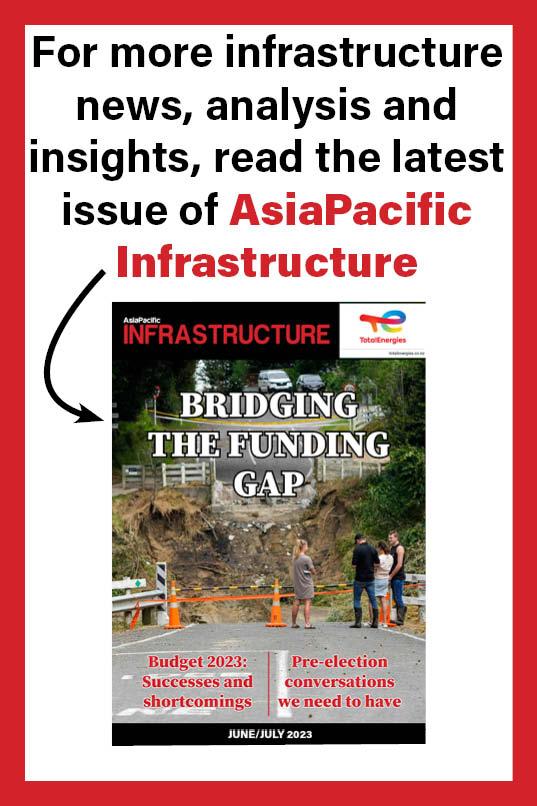
must play in taking responsibility for safer outcomes.
There was a strong case for change, and the new Guide followed on from WorkSafe guidance for road and roadside workers issued late last year, which set out how to manage health risks, safety risks, and practices when setting up and operating traffic control around road work sites.
The existing Code of Practice is intended to be gradually phased out of contracts, with transition to the new Guide anticipated to be largely completed by July 2024.
Road workers are used to working in the road corridor and are well-placed to understand and manage the direct risks. This is a fundamental shift to the way we think about traffic management, so it’s not going to happen overnight. But companies are used to managing road work sites, so this change comes down to how we interpret new requirements in a practical sense.
Despite the case for change, these are significant updates and would take some time to embed, with the shift in thinking and practice requiring time and effort from civil construction companies.
Collaboration with clients in both the private and public sectors would be needed going forward, and CCNZ would be supporting
members in addressing any transitional challenges with good technical guidance and advice, alongside a new Industry Steering Group stood up in March 2023 to support the implementation of the Guide, which had its first meeting on 18 April.
The New Zealand Guide to Temporary Traffic Management is available at https://www.nzta.govt.nz/ roads-and-rail/new-zealand-guide-to-temporary-traffic-management.
The days of needing on site a mobile crane, a boom lift or other types of elevated work platforms, a forklift and an excavator are numbered - one machine can do it all.
Rotating telehandlers may look a lot like their conventional cousins, but they are very different.
Their arrival on New Zealand work sites has completely changed the way project management is planned and the way on-
site work is completed in a safer and faster manner. They load material, pick it up, drive to where it’s needed and then unload. The rotating telehandler can then pick the load, rotate and place the materials where needed.
The concept originated in Europe, where the majority of urban construction sites are very compact and do not allow room for traditional telehandlers.
“Rotating telehandlers have taken North Ameri-
ca by storm and over the past 18 months have been attracting a lot of attention in New Zealand,” says APS general manager Darren Boon, agents for Magni, one of the most technologically advanced brands of rotating telehandlers in the world.
“As technology has improved so has the reach and lifting capacity of these
type of machines. On a multi-level construction site, a machine with a five-tonne lift and 26-metre reach would usually have been the standard,” says Boon.
“Now machines are available for bigger projects with heavy lift capability up to 13 tonnes and machines with a reach of 51 metres.”

Magni recognised early that the biggest trend in the industry is to lift safer, higher and heavier

An Auckland private building company has purchased a Magni rotating telehandler in favour of hiring a tower crane for the construction of a four storey apartment block in West Auckland. The rotating telehandler meets most of their lifting requirements for the crane work, with a larger mobile crane only being bought in to lift the heavy pre-cast panels. Having the ability
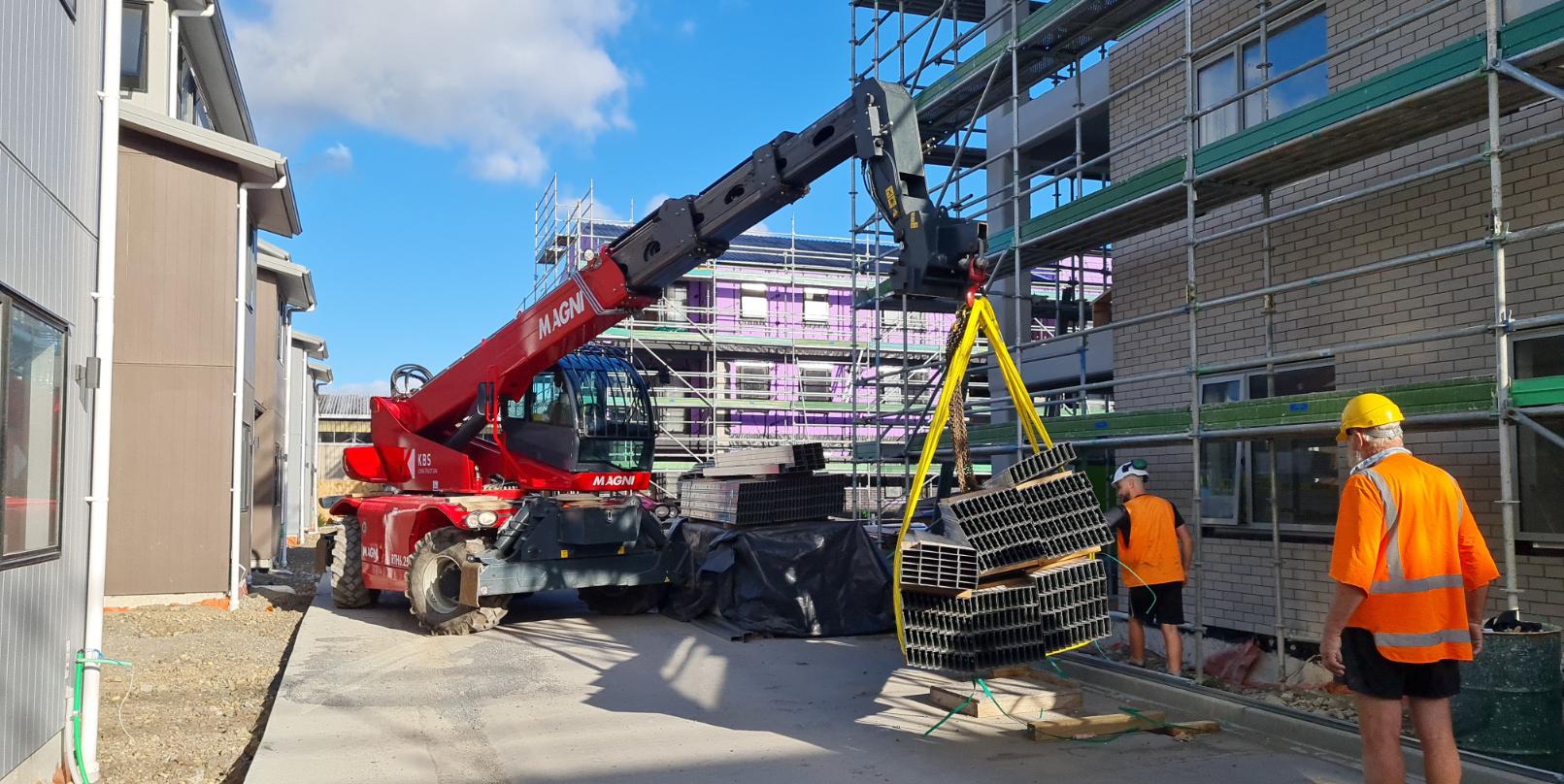
to easily swap attachments between winch and a set of forks the machine can pick and carry around the building site for more efficient lifting or the unloading of trucks. All deliveries from the building supplier can be ordered on flat-deck trucks which means quicker delivers and savings of up to $150 per delivery by not waiting for Hiab/crane truck to become available.
The Load Movement Indicator (LMI) system is a load limit device. It is fitted as standard on all Magni telescopic handlers (RTH, TH and HTH ranges). It is made up of a rotation sensor, stabiliser cable reel, lifting cylinder pressure sensors and the LMI safety control board. Together, these components provide the operator with the best real-time load chart. This system continuously analyses the spatial positioning of the load and stores specific load charts for each attachment, displaying the correct load chart based on the machine’s working configuration.
The LMI system constantly monitors the movements of the machine to avoid any type of overload. If the system detects operating inconsistencies, it interrupts all aggravating movements, allowing only safe maneuvers (boom retraction and load release). This prevents operator error causing serious injury to themselves and nearby staff.
Every telehandler is equipped with the R.F.ID automatic attachment recognition system on the boom head. Whenever a new attachment is fitted to the machine it is recognised automatically and the display shows the corresponding load chart.
The safety of the operator and people nearby is paramount
We're proud that more than 6300 members trust us to be a guiding influence in creating a positive change in the health and safety culture of New Zealand's construction and wider industries.
Our members are in excellent hands. Their annual membership fee gives them access to a trove of exclusive industryprepared best practice guides, tools, research and other helpful health and safety content.
It also gives them exclusive access to a vast range of discounts from well-known suppliers and big monthly promotions.
No matter the size of your organisation, choosing to be a Site Safe member will provide you with industryleading health and safety guidance across New Zealand.
Skilled and qualified in a variety of areas and industries, our Safety, Health, and Environmental Advisors provide expert consultancy, auditing, training and general assistance for your business.
So if you're dedicated to workplace accident reduction and raising health and safety awareness, becoming a Site Safe member may be the move you're looking for.
•10% discount in your first year of membership, increasing up to 30% in your fifth year
•Instant recognition from the industry of your commitment to health and safety
•Networking opportunities at Site Safe member events
•Yearly certificates, stickers and posters
As one of New Zealand's leading health and safety notfor-profit organisations, Site Safe prides itself on its ability to empower and build safer and healthier workplaces across the country.
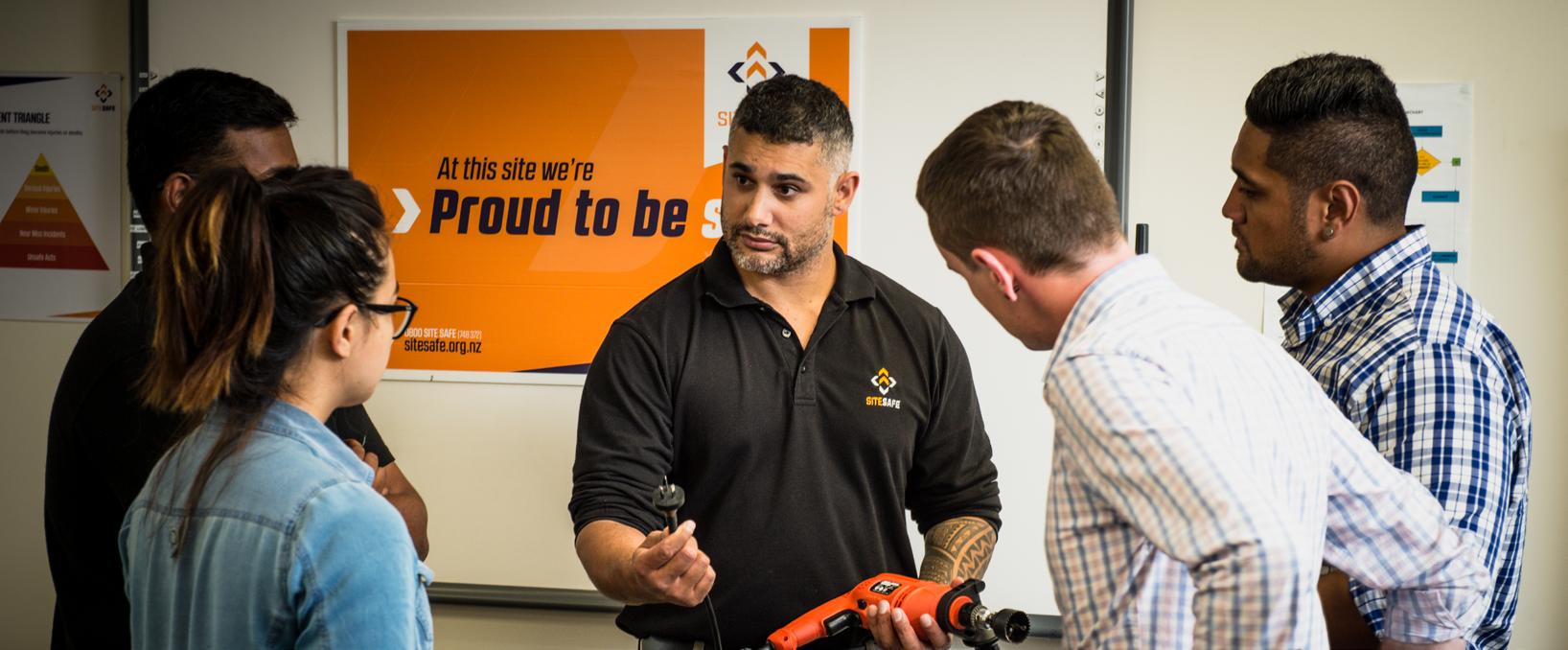 By Communications Advisor Jonathan Guildford
By Communications Advisor Jonathan Guildford
•Keep up to date on big moves in the health and safety space with our exclusive newsletters
•Access to more than 50 exclusive Toolbox Talks for you to download
•Use of the Site Safe member brand for marketing and promotion of your business
•Book and pay for your training online
•Easily view your upcoming courses
•Purchase products online
•View past transactions with Site Safe online booking
We also partner with Trade Associations to provide additional benefits to their members and opportunities to promote
upcoming conferences and events through Site Safe's communication channels. If you are a member of one of our partnered Trade Associations, you will receive a 10 per cent discount on your annual Site Safe membership fees.
If you'd like to see how being a Site Safe member can benefit your businesses health and safety goals, head to the membership tab on the Site Safe website at: https://www.sitesafe. org.nz/memberships/joinus/
Site Safe is a national not-for-profit membership organisation.
Since forming in 1999, it
has been a driving force for creating a positive change in the health and safety culture of New Zealand's construction and wider industries.
Our organisational mantra is being "proud to be safe", and our ultimate goal is to reduce injury and harm to ensure Kiwi workers return home safe to their whānau at the end of each day.
To do this, we provide education and resources on best practice systems and behaviours known to improve on-site health and safety. We help develop future health and safety leaders and advise businesses on solutions that make a real difference.

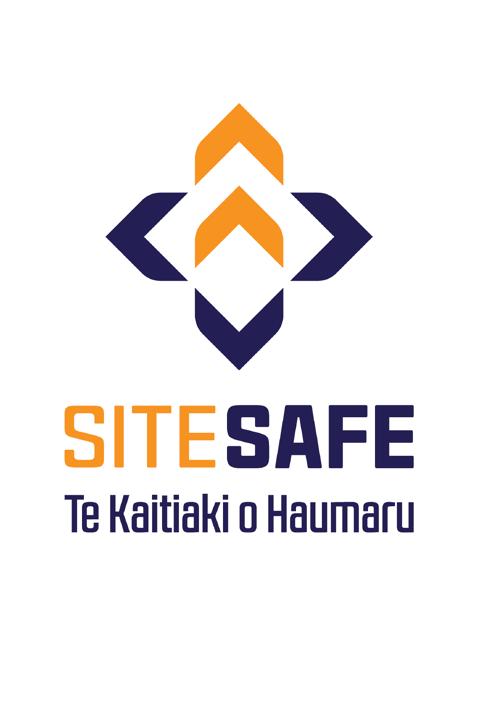
The construction industry has a strong Filipino presence, yet they are not typically very vocal during English-spoken training
Earlier this year, new Field Officer Ronald Tuano delivered MATES in Construction New Zealand’s first Tagalog General Awareness Training.
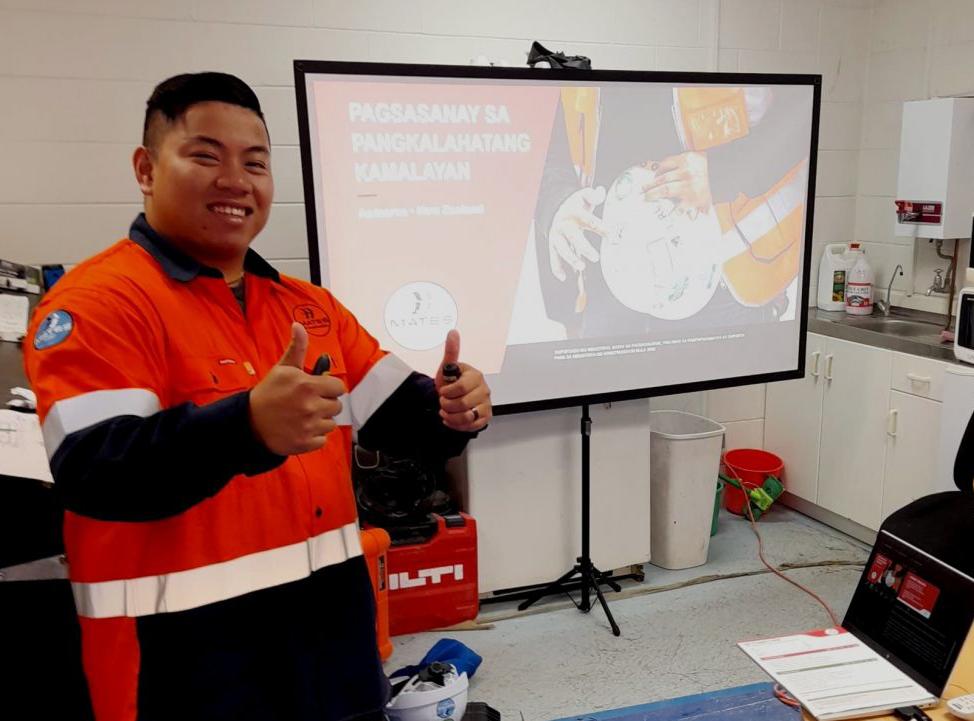
Delivering mental health and suicide prevention training in Tagalog helps build strength of support and understanding in the Filipino community.
Tuano says he found the crew more engaged in the conversation.
“We don’t often hear much
from our Filipino workforce during our English-spoken General Awareness Training.
“While it was only our first Tagalog attempt, the training was more effective in getting the message across.”
For Tuano, delivering General Awareness Training in Tagalog is a rewarding way to give back to the Filipino community.
“As a Filipino Kiwi, the opportunity to speak my native language and deliver
the message of suicide prevention to my people is something I am truly proud of.”
James Whitworth, Project Manager on Bracewell’s Ponsonby site, was proud to have MATES on site.
“Having the training delivered in Tagalog shows that we are serious about cultural diversity and the well-being of all cultures on our sites,” Whitworth says.
“I believe it shows that we care about our Filipino brothers.”
Delivering in Tagalog removes a barrier to understanding, he says.
“Together with MATES, we hope to create an environment that makes our Filipino workforce feel comfortable and confident to raise issues common to their community.
“We believe this is a positive approach to mental health within our industry.”
SLABX200 is EXPOL’s new generation high performance Expanded Polystyrene Board specifically designed to deliver high compressive strength and improve insulation under concrete slabs.

It delivers an uncompromised compressive strength of 200kPa @ 10% deformation and exceptional Insulation Values. Specifically engineered for residential and commercial projects, its high performance gives engineers and specifiers peace of mind while increasing the thermal performance of a building.
SLABX200’s durable nature means it will not degrade over time, keeping its integrity for the life of the structure.
SLABX200 delivers the ultimate high performance:

Uncompromised compressive strength 200kPa @ 10% deformation
Exceptional Insulation Values
High water resistance
Lightweight and easy to handle
Various thicknesses from 50mm to 600mm
SLABX200 waste is actively recycled into other EXPOL products
SLABX200 - the product of choice for specifiers and the construction industry.
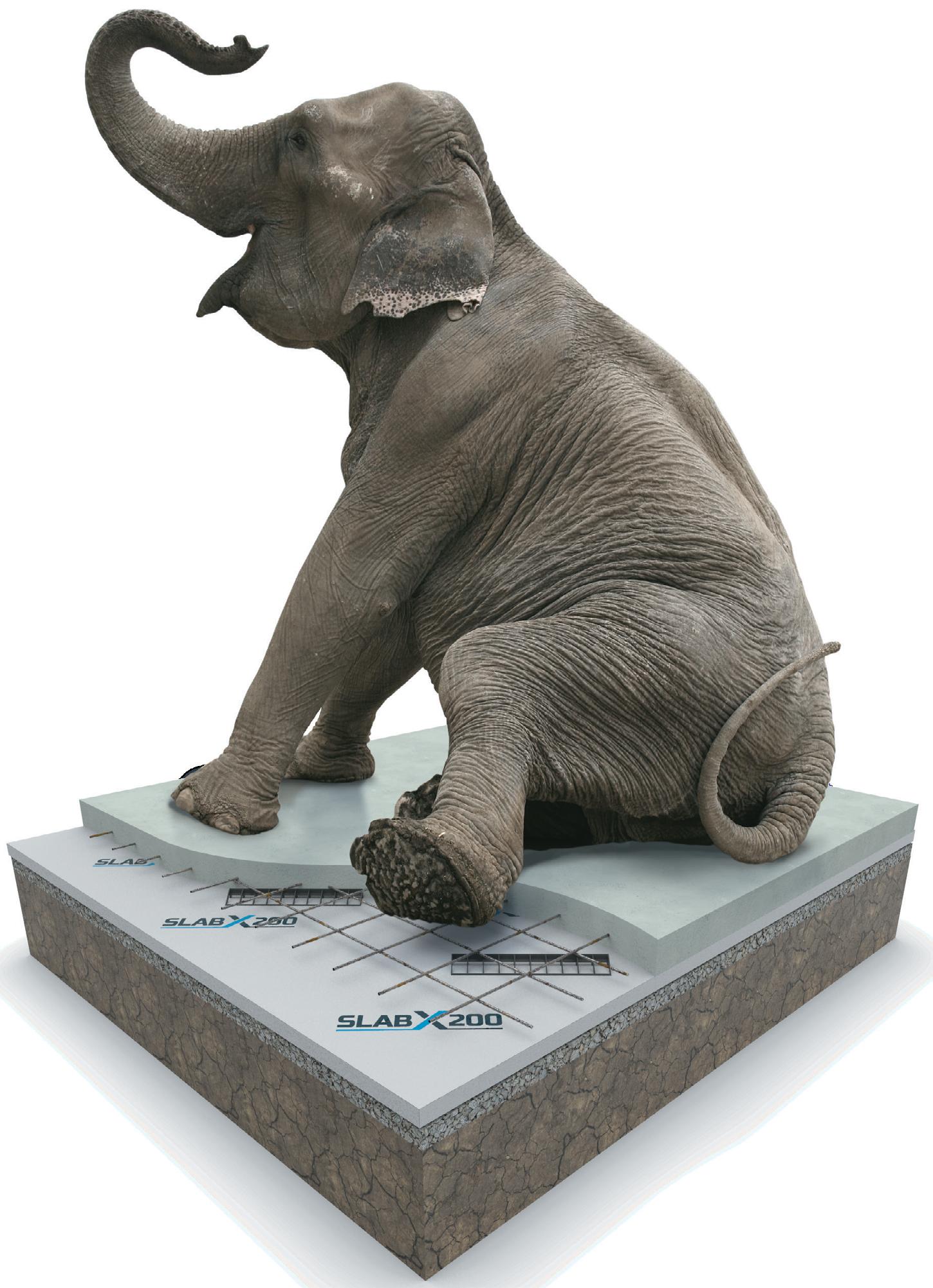
Learn more about SLABX200 visit www.expol.co.nz Call or email our Technical Manager; T: 0800 86 33 73 or E: tech@expol.co.nz
3.0 R-VALUE @100 mm
200 k P a STRENGTH @ 10% DEFORMATION
How has the Certification industry been disrupted by the Covid environment and what have we done to combat the changes


Ayear ago I wrote an article on this very same topic. At that time New Zealanders, and in particular those of us up in the Northern part of the North Island, had just come out of an extended period of restrictions.
Little did we know that we would return from the Xmas break and be pushed back into another series of restrictions.
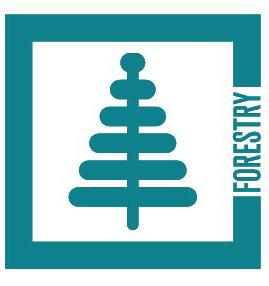
As the year unfolded New Zealand finally threw open the doors and allowed both its people and international visitors to start the process of travelling freely up and down country again.
By the time this all came into being we had all spent more than 2 years managing Covid through an initial eliminate strategy, and ultimately a learning to live with the virus world
In the previous article I focussed on the core operational levers that we had been required to review and amend to allow our business to operate and effectively survive.
Now a year later all of the changes we had determined to make are either locked in or in the throes of being locked in.
There is one area that continues to be a significant struggle for all businesses throughout New Zealand, and we at Telarc are not isolated from it. This area is the way in which we attract, retain and support people in a post Covid world.

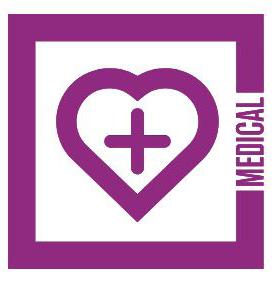
We are a normal business by New Zealand standards. We employ just under 50 people. We have workers

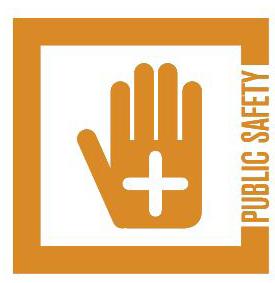

based from Auckland in the north down to Dunedin in the south. We have clients on Stewart Island all the way to Kaitaia in the north.
Five years ago the business employed predominantly European males with an average age of late 50’s to mid-60’s.
Covid’s arrival saw a number of those employees retire. When seeking to replace the retiring wave we had in front of us we found ourselves increasingly looking at and employing really good candidates from offshore.
So when you look at our business today it is a completely different demographic.
Half of the current team identify as NZ European. We now find ourselves with the balance of the team being born and educated in
places such as Iran, Pakistan, South Africa, Zimbabwe, India, Korea, UAE, Croatia, Germany, Canada, Fiji, the UK and Australia.
Encouragingly as we have on-boarded these people the male/female split is now lifted to 60/40. And our remuneration is based on role and competence within the role as well as performance.
Where have the workers gone? The change is not something we had planned for. What we discovered as we looked to replace our ageing workforce was that there weren’t many New Zealanders with the experience and qualifications we needed who were looking for work.
You may ask why? The challenge we have is that we need people with real world experience. We audit predominantly infrastructure management, manufacturing and construction companies. The building of those entities took place, in a good proportion of cases, many years ago.
As we, in New Zealand, have automated processes and downsized traditional operational training grounds for new talent coming into the industries sectors mentioned earlier we have seen the pool of “could be” auditors diminish.
On the other hand, in the countries I mentioned earlier, from whom we are sourcing qualified people, we are able to access people who have been involved in, or supported, the development and management of large-scale infrastructure projects. This is both in their own countries as well as within the regions they
have resided in / travelled to.
By having the experience they do, and also having been exposed to management system auditing, they arrive really well qualified to support the growing certification market that New Zealand is experiencing.
We still find the odd diamond in New Zealand who brings the work experience we need to the job. In most cases, though, the people who do successfully come to us do have a number of years of experience in a variety of operational roles.
This leads to our having to jointly invest between 9 and 12 months to be trained, and supported, to be confident when they start their stand-alone auditing journey. We continue to support and on-board local people, but as I have said the journey to being confident is a long one.
The other aspect to weigh into this equation relates to “where have all the New Zealand workers gone”. We hear all sorts of reasons including – early retirement, overseas experience (delayed or just the right time for it), moved to another country for higher pay or lifestyle, became a real estate agent or property developer pre-2022.
The list of reasons is getting longer and, to be honest, it is not something we can influence change in overnight. It is what it is and as a result we solve for today’s problems with the most suitable resource we can find. And on the whole the best qualified come to us from offshore.

With the on-boarding of people from all over the
globe we have found ourselves facing dilemma’s that we wouldn’t have predicted in a pre-Covid world.
A good example of one of the challenges we face is dealing with spoken and written English. For a number of the people who have joined us English is the second, or third and even sometimes fourth language of choice for them.
So things that would normally be taken for granted, such as writing or defining orally a concisely worded observations or recommendation, can initially be a struggle for some of the new people we have employed.
Add into this the idiosyncrasies that make New Zealand business, and social banter, challenging for new arrivals results in both our clients and our new auditors ending up being a little frustrated in finding com-

mon understanding.
We recently ran a structured approach towards better understanding some of the dilemma’s auditor’s face when getting out into their first “stand alone” engagements.
One of the biggest insights related to keeping the onsite auditing engagement calm. When managing an audit the last thing the auditor wants is for the audit to turn into a “voices raised” and “defensive” engagement. Finding ways to put all parties at ease is a skill. And when achieved allows the engagement to proceed with minimal flare ups or disruptions.
Even for New Zealand born and raised auditors, out on their first “stand alone” audits, keeping the engagement calm is challenging.
They come to the engagement understanding
Telarc is a Jas-anz Accredited Certification Body which provides qualified, competent, New Zealand auditors, who are industry coded to provide relevant and impartial intervention for a large range of New Zealand business regardless of the business size.
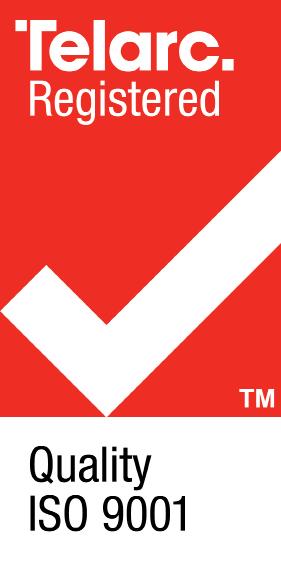
The body is able to provide New Zealand business with an individual or a team of auditors capable of assessing one or multiple standards across one or multiple sites.
While the key priority of any commercial relationship is to deliver a product or a service, there is an increasing need from businesses to have confidence that their tendering parties and suppliers are managing their business in a manner that won’t negatively impact the supply relationship.
There are increasing demands from buyers for their suppliers to provide confidence that they are operating their business in a manner that is delivering good quality and environmentally
aware products (ISO 9001 and ISO 14001) while managing workers in a way that protects worker well-being and safety (ISO 45001).
There is more demand across other areas such as ethical work practices, Asset Management (ISO 55001) and IT Management (ISO 27001).
Accredited Certification looks for gaps, risks and improvements in the way that work is actually done versus the way it is planned and communicated.
This provides visibility of where work practice and or documentation anomalies lie in all levels of the business. This then leads to improvement activity so Certification can be granted.
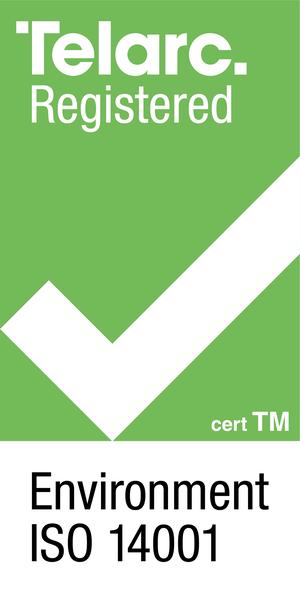
The second growing area that is driving minimisation of risk through Certification is through board and senior leader directives.

Over the last decade, legislation and regulations have looked to push culpability for sub-optimal work practices towards senior leaders and boards.
the idiosyncrasies of New Zealand and its language. So when a recent arrival to New Zealand who is operating with English as a 2nd or 3rd language is trying to i.) Interpret the spoken word while, ii.) trying to keep the client calm and engaged, the world can turn messy very quickly.
I haven’t even touched on the writing of reports in this overview as this then creates the next downstream challenge for the new arrivals.
For those of you reading the article you probably are thinking why bother, if it is going to create all the frustrations alluded to above?
What we have found is the people we are hiring from off shore are intelligent, motivated, qualified, “keen as” workers who want to live in a country where they can safely raise their family while working hard.
When I was growing up, the qualities I see in the people moving here is what differentiated New Zealand from other countries and made our people successful all over the world.
To that end increasingly we are going to become more reliant on workers coming from countries around the globe. Understanding their culture and their difficulties when integrating into the New Zealand way is going to be a challenge we will have to solve for.
The above is one example of the challenges we are facing in a post-Covid world. There are a number of others, but for this exercise I think it is better to focus on one area to highlight the changes we will all have to deal with over the
Once an organisation accepts that the days of being the “good old kiwi business” are gone and that the new world order requires a very open, culturally diverse mind-set the overarching people management ethos changes, significantly.
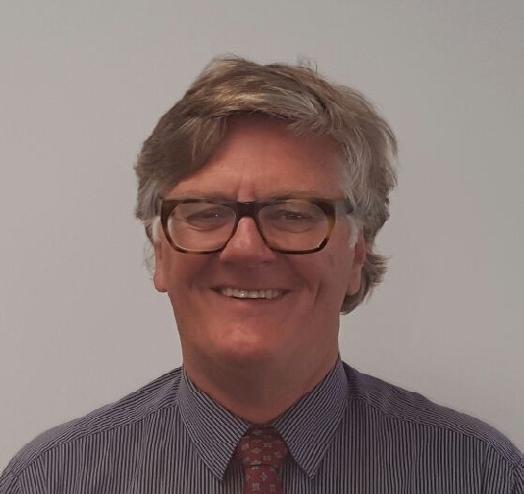
The key is to embrace the change and find ways to adjust our mind-set to remain successful, rather than fighting it.
Which is a nice segue into the final point of this overview.
The greatest challenge post Covid is mind-set. Trying to bring back the past, trying to replicate what we want and trying to carry out work in a way that was successful before is not going to be easy.
Mind-sets need to change and need to adjust to a new world order in which the globe is becoming a huge resourcing opportunity, and that we should get the best people we can before someone else does.
Risk comes in many forms andcertification
helps over a variety of levels

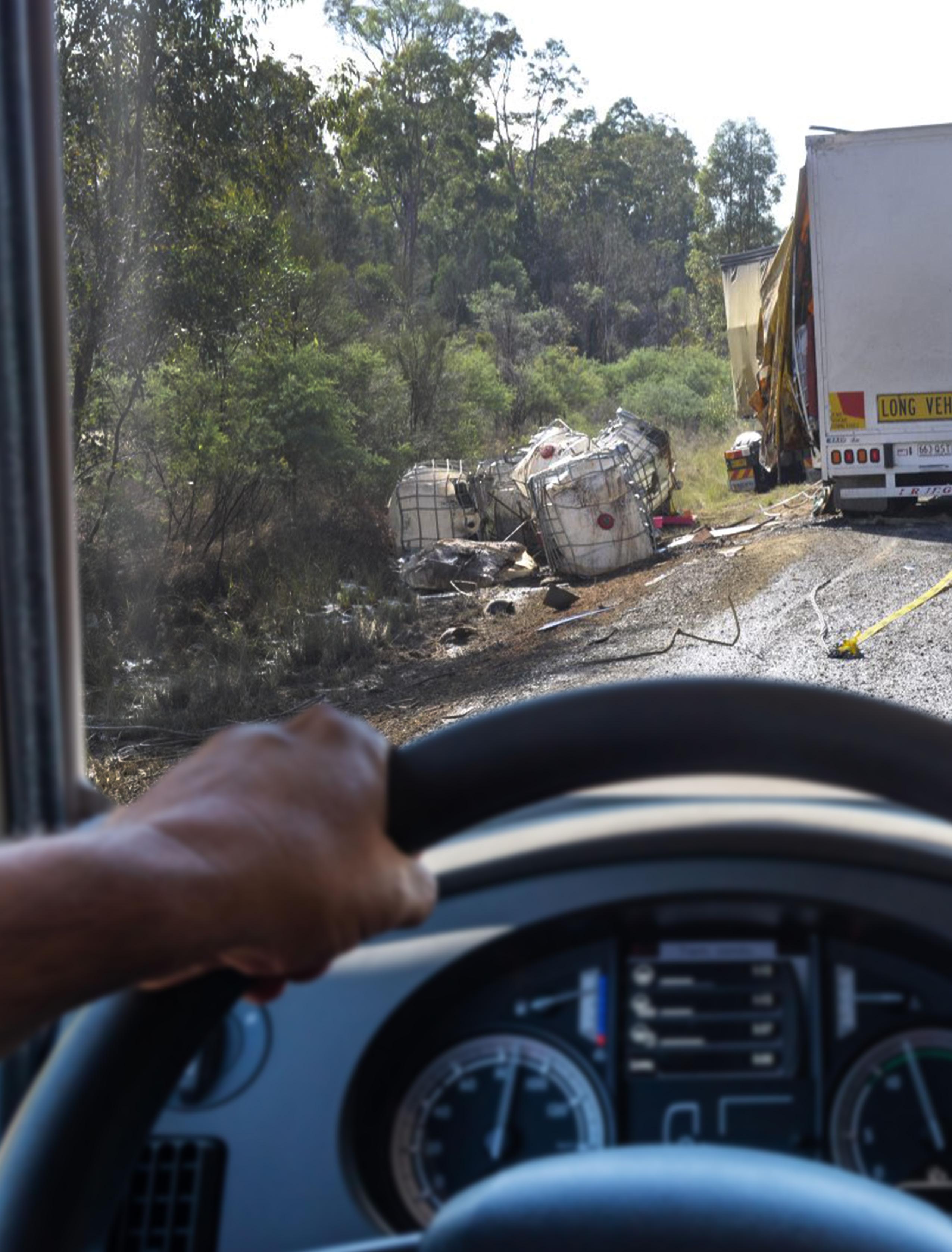

Changes to our Global Harmonisation System (GHS) chemical regime applying from 30 April 2021 require accurate and timely advice - non-compliance could prove costly.
Competent staff avoid expensive and sometimes confusing compliance advice, while enabling an effective response to chemical incidents, often without requiring emergency services.
Inspectors and certifiers with years of expertise warn of a declining national workplace chemical safety performance.
A crucial factor is the continuing loss of onsite chemical safety advice, primarily due to replacing flawed but effective mandatory Approved Handlers with whatever employers now deem sufficient.
A second major chemical incident in the same public facility is a timely reminder that safe chemical management is not receiving the attention it deserves. Competent staff are essential.
NZ (RCNZ) Competent Chemical Handler
Certification courses are tailored to reflect your chemical inventory and enable compliance.
Upskill the last of your HSNO Approved Handlers, update Certified
Handler requirements and successfully implement the updated Global Harmonisation System (GHS).
For struggling, noncompliant business operators who are attracting attention from enforcement agencies, practical onsite advice from Competent Chemical Handlers helps lessen the load on a diminishing number of Compliance Certifiers. It helps to ensure site chemical safety measures remain effective.
RCNZ Competent Chemical Handlers (CCH) are increasingly in demand, resulting from our popular ‘Walk and Talk’ site visit to assess actual chemical management performance, identifying the need for specialist training, throughout the product life cycle.
Chemical incidents now guarantee media attention, often sensationalising the incident by highlighting persons adversely affected by unwanted exposure to chemicals.
This can irretrievably damage reputations to both customers and suppliers, particularly if employers have not taken all practicable steps to safely manage their chemical inventory throughout their operations.
When chemicals do cause problems, employees, customers, WorkSafe
Ensuring staff are competent to safely manage the harmful chemicals essential to your business includes your effective response to a chemical incident.
To enable a smooth, cost-effective transition to and beyond compliance, you need compliance tools:
- the updated RCNZ industry Codes of Practice reflecting our revised GHS chemical management system
- your 24/7 CHEMCALL® emergency response subscription; and the all-important ‘how to’ advice arising from our popular site ‘walk and talk’ assessments - replacing your Approved Handler with our Competent Chemical Handler certification
These are all cost-effective measures which add value to your business.
Talk to us today about compliance tools, which confirm you are a good employer, committed to safeguarding employees and our environment by safely managing your chemical inventory.
Responsible Care NZ
04 499 4311
www.responsiblecarenz.com
inspectors, local authorities, health protection officers and emergency response organisations all benefit from the expertise and product safety information available 24/7 from 0800 CHEMCALL®, our industry’s unique, subscription based chemical emergency advisory service.
Supported by thousands of compliant Safety Data
Sheets (SDS) combined with their collective industry expertise and local knowledge, CHEMCALL® responders provide callers with comprehensive advice about how to safely manage the incident, safeguarding people and often avoiding business disruption.
Employers who tell their employees to ‘leave their personal problems at home’ may be contributing to a more hazardous workplace by increasing the risk of serious, even fatal, accidents on site, a health and safety service provider says
Stats NZ reports a significant increase in the proportion of people with poor mental well-being, up from 22 per cent in 2018 to 28 per cent in 2021. How this impacts broader health and safety—for example, falls and accidents with machinery, power tools and forklifts—is a significant concern.

Mental health issues cause distraction and anybody working on a construction or manufacturing site, among others, cannot
afford to be distracted, says +IMPAC Health and Safety trainer Maxine Bowring.
“There’s no data on what contribution mental health makes to workplace incidents because people can keep it hidden. Nobody may know that the person involved in an accident, for example, is going through a divorce, is trying to deal with excessive work-related stress, or having financial anxieties.
A study by Tatauranga Aotearoa (StatsNZ) called
New Zealanders’ Mental Wellbeing Declines, reports that the portion of people with poor mental wellbeing equates to more than a quarter of the population.
Mental health first aid programmes increase mental health literacy in workplaces and give people the understanding and confidence to talk about depression, anxiety and suicide.
New Zealand has one of the worst suicide rates amongst OECD countries, especially of young men
(males are more than twice as likely to die from suicide than females), and particularly high for Māori males aged 15–44 years.
“Having somebody there to listen and offer support makes a significant difference,” Bowring says.
“Having somebody in the workplace who can recognise the signs, offer a quiet word, a genuine conversation, and encourage them to seek professional help and support can save lives and help prevent workplace
accidents.
“There is always somebody in the workplace that people seem to trust enough to take into their confidence — these are the people who will make ideal Mental Health First Aiders,” Bowring says.
Mental Health First Aiders are trained to approach, assess and assist. The process involves listening without judgement, providing information and support and encouraging the struggling person to seek professional help.
“Very often, people can see something is wrong, but they don’t know how to open the conversation. The title, qualification, and tools to open conversations will better position them to open up sensitive conversations with fellow workers.

“Mental health is not a visual thing. You cannot see what’s going on in somebody’s head. We assume everybody thinks and copes as we do, but we are all wired differently. Different genetics, different lives.”
Christchurch-based +IMPAC Health and Safety consultant and trainer, Louise Trevella, says unlike most health and safety training, people need a clearer picture of the risk in the workplace when it comes to mental health.
“Falling is a critical risk for people working at height, but with a number of known excellent controls around that activity, the likelihood of falls is reduced. Control measures can be applied when leaders understand the critical threat to their people.
“With mental health and suicide, people don’t clearly understand the risk—the hazard is not visible and they often don’t know what to do if they suspect there are mental health issues
affecting one of their team.
“You can tell people to leave their problems at home, but that’s not going to happen. People bring their mental health issues, challenges and problems
for mental health in the lives of regular Kiwis.
She offers the following advice to employers who want to help those struggling with mental health in the workplace.
“Use the assessment to open up a dialogue with your staff. Understand if they are thriving or just surviving.
“You can use tools such as Surviving to Thriving scales to get them to rate themselves by colour—red, amber, yellow or green; this can help normalise mental wellbeing conversations and assist in identifying where people are at emotionally or mentally.
“Mental Health Awareness Week (18 – 24 September 2023) is also a great opportunity to raise awareness. It shows you care,” Trevella says.
to work because we are human. You can’t just flick a switch.”
Certain states in Australia are even going so far as to legislate mental health and safety in the workplace, Trevella says.
“Employers are starting to understand that they have influence over a worker’s mental health and well-being and that they have an obligation to that worker’s mental health and safety, which is just as important as physical health and safety.
“Mental health issues can lead to physical accidents through distraction, loss of concentration and low environmental awareness. This can lead to poor decision making or uncoordinated activities.”
A Mental Health First Aid course creates mental health champions to foster conversation, knowledge and understanding of mental health in the workplace—a vast improvement on the little or no support
1. Assess what measures are currently available Employers should ask what they are currently doing to protect their people on the mental health front. Assess how the company does business and what the business can tweak to make a real difference for its people. “This may include revisiting how rosters are run, what social supports are in place and how tasks are carried out.”
“The Dr Hillary Bennett model suggests, in Protecting Mental Wellbeing at Work , that employers assess the risk and do it by breaking work into four areas—organisation, tasks, environment and social. Work through those subtopics to understand what aspects of each subtopic may contribute to mental health issues.
Be ‘CPR’ prepared Mental Health First Aid is like CPR training, but for mental health. Most workplaces have first aiders, defibrillators and first aid kits, and putting mental health first aiders into the workplace is the next step.
“One in four Kiwis report that they are experiencing mental health issues. Mental Health First Aid in the workplace is a grassroots approach to tackling this problem. If we can change the culture, we can fundamentally impact all New Zealanders’ mental health and well-being.”
Founded in 1999, +IMPAC provides a full range of health and safety services—consulting and advice, training, safety management software, contractor pre-qualification, recruitment of H+S professionals and specialist safety equipment.
+IMPAC employs 100 staff across New Zealand, specially selected for their practical business and health and safety backgrounds.
Assessing changes in daily movements before, during and after holidays, researchers found that people displayed more active, healthy behaviours when they were on holiday, even when they only had a three-day break.
Across the 13-month study period, people generally took an average two to three holidays, each being around 12 days. The most common holiday type was ‘outdoor recreation’ (35 per cent), followed by ‘family/ social events’ (31 per cent), ‘rest and relaxation’ (17 per cent) and ‘non-leisure pursuits’ such as caring for others or home renovations (17 per cent).
Specifically, it showed that on holiday people:
• engaged in 13 per cent more moderate-to-vigorous physical activity (MVPA) each day (or five min/ day more)
• were five per cent less sedentary each day (or 29 min/day less)
• slept four per cent more each day (or 21 min/day more).
University of South Australia researcher Dr Ty Ferguson says that the research indicates that people display healthier behaviours when they are on holiday.
“When people go on holiday, they’re changing their everyday responsibilities because they’re not locked down to their normal schedule,” Dr Ferguson says.
“In this study, we found that movement patterns changed for the better when on holiday, with increased physical activity and decreased sedentary behaviour observed across the board.
“We also found that people gained an extra 21 minutes of sleep each day
they were on holiday, which can have a range of positive effects on our physical and mental health. For example, getting enough sleep can help improve our mood, cognitive function, and productivity. It can also help lower our risk of developing a range of health conditions, such as obesity, diabetes, cardiovascular disease, and depression.
“Interestingly, the size of these changes increased in line with the length of the holiday – so the longer the holiday, the better the health benefits.”
The study used data from the Annual rhythms in adults’ lifestyle and health (ARIA) study where 308 adults (mean age 40.4 years) wore fitness trackers 24 hours a day for 13
months. Minute-by-minute movement behaviour data were aggregated into daily totals to compare movement behaviours pre-holiday, during holiday and post-holiday.
Senior researcher Prof Carol Maher says that the study offers support for the growing movement for a four-day week.
“A shorter working week is being trialled by companies all over the world. Not surprisingly, employees reported less stress, burnout, fatigue, as well as better mental health and improved work-life balance,” Prof Maher says.
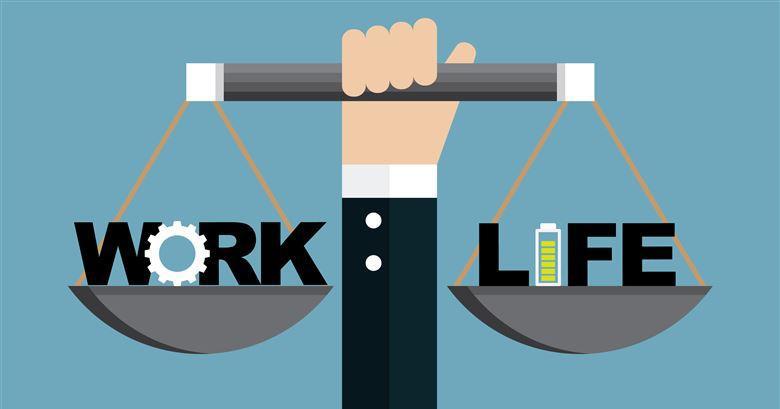
“This study provides empirical evidence that people have healthier lifestyle patterns when they have a short break, such as a
three-day weekend. This increase in physical activity and sleep is expected to have positive effects on both mental and physical health, contributing to the benefits observed with a four-day work week.
“Importantly, our study also showed that even after a short holiday, people’s increased sleep remained elevated for two weeks, showing that the health benefits of a three-day break can have lasting effects beyond the holiday itself.
“As the world adapts to a new normal, perhaps it’s time to embrace the long weekend as a way to boost our physical and mental health.”
As a four-day work week is trialled in countries across the globe, University of South Australia researchers are backing the idea after new empirical research finds it has health and performance benefits
No matter where your business travel takes you, you can live as local as you like. Want to find an award-winning flat white? How about the best restaurant to charm clients in town? Because we’re local, we can point you towards the very best.
QUESTAPARTMENTS.CO.NZ




